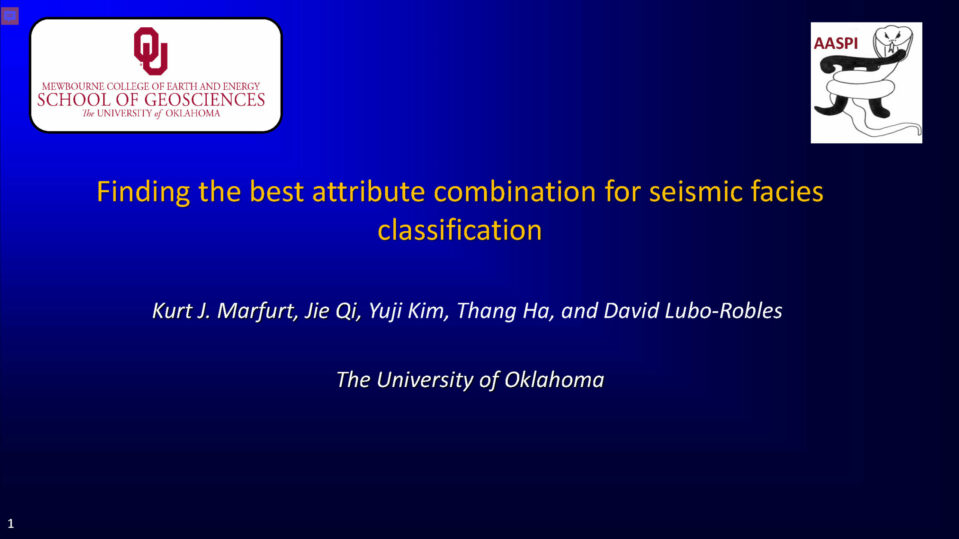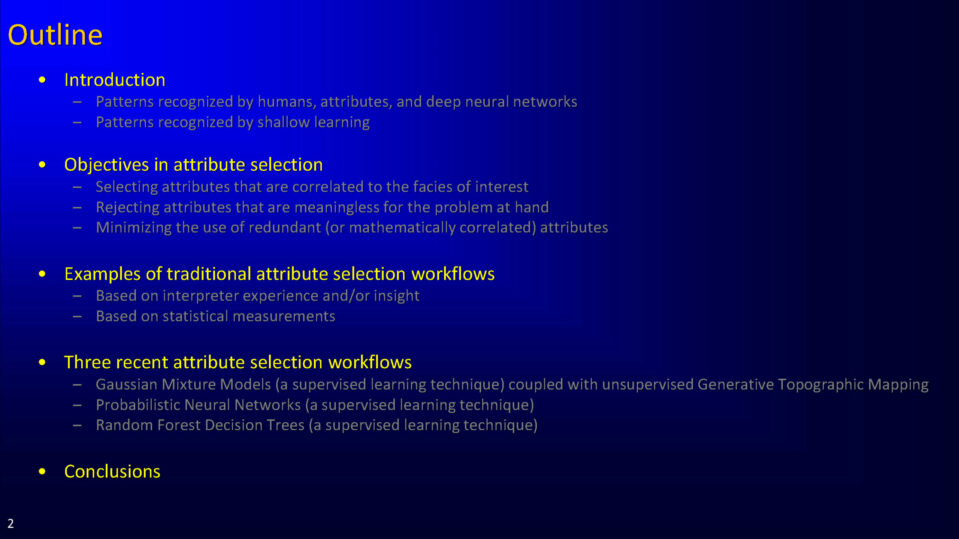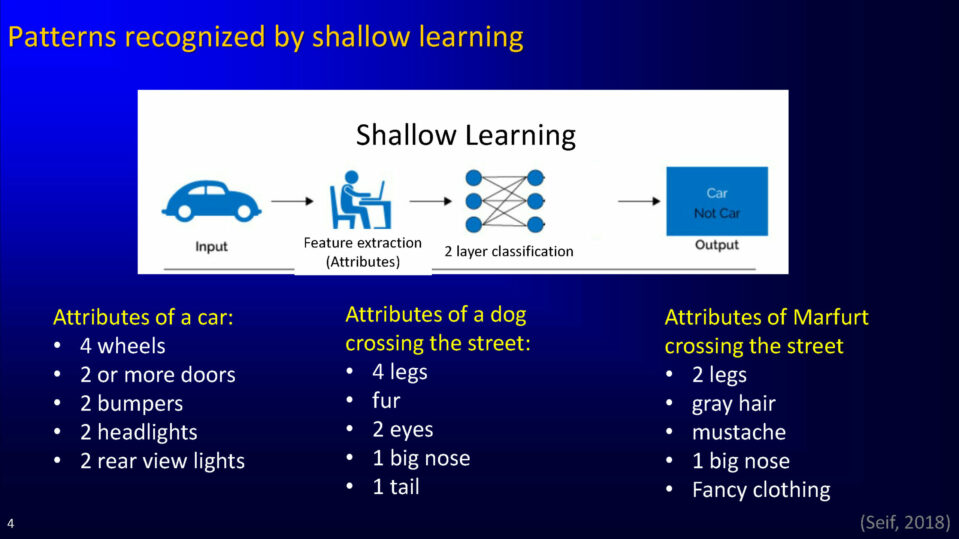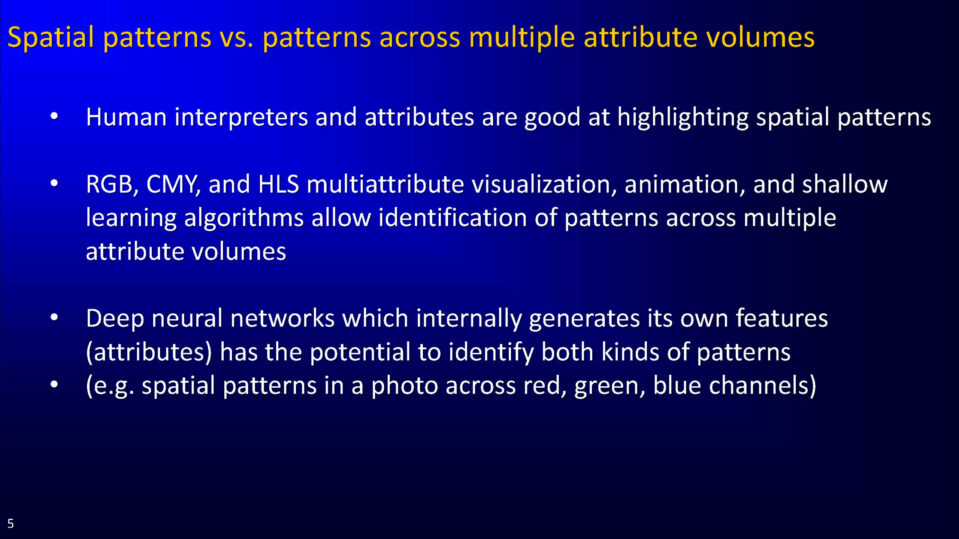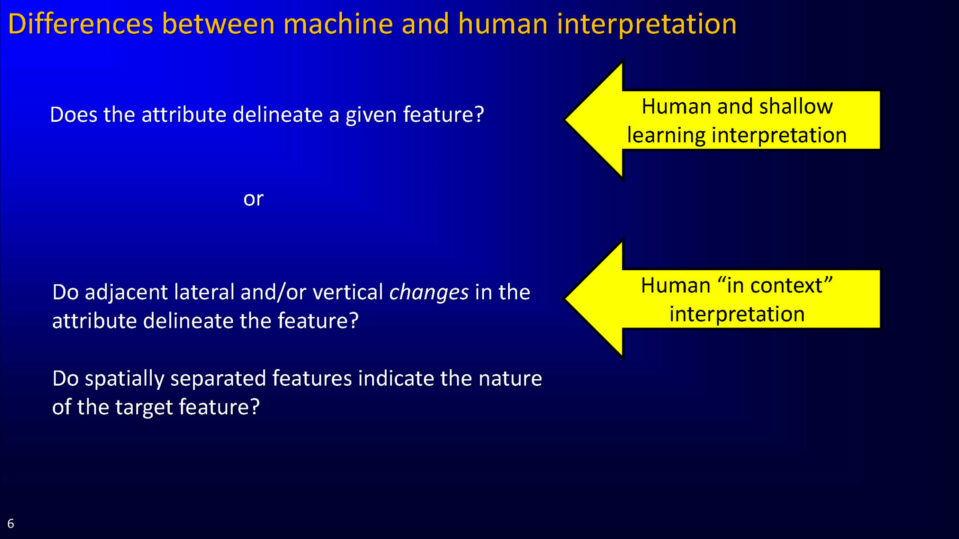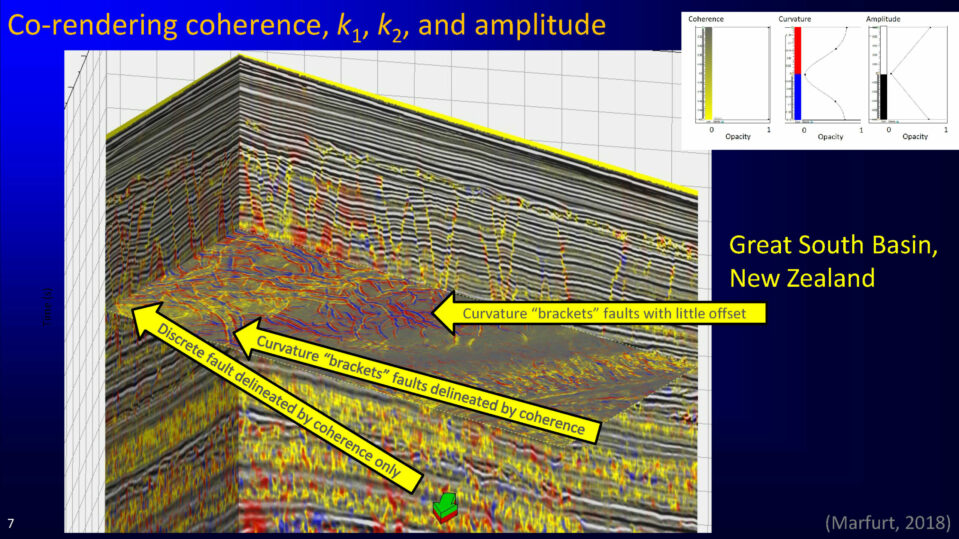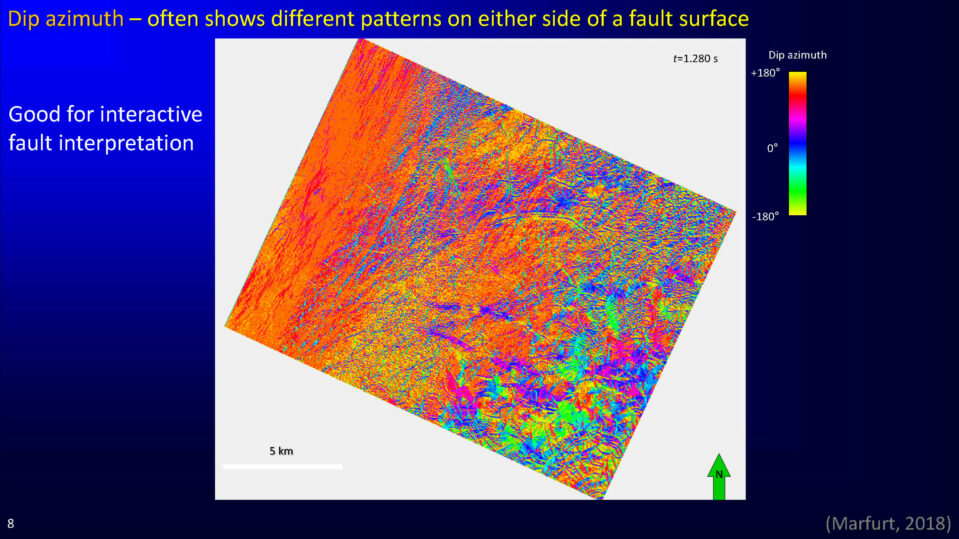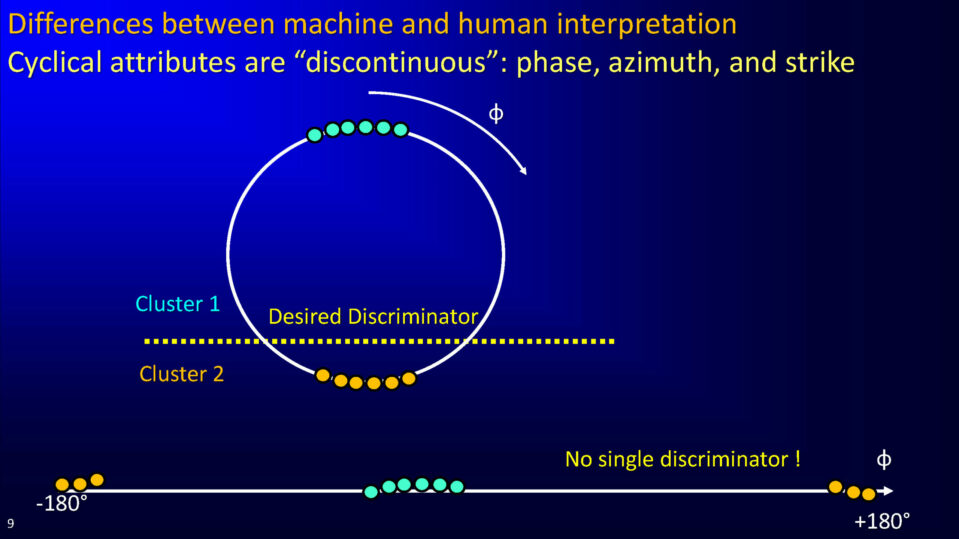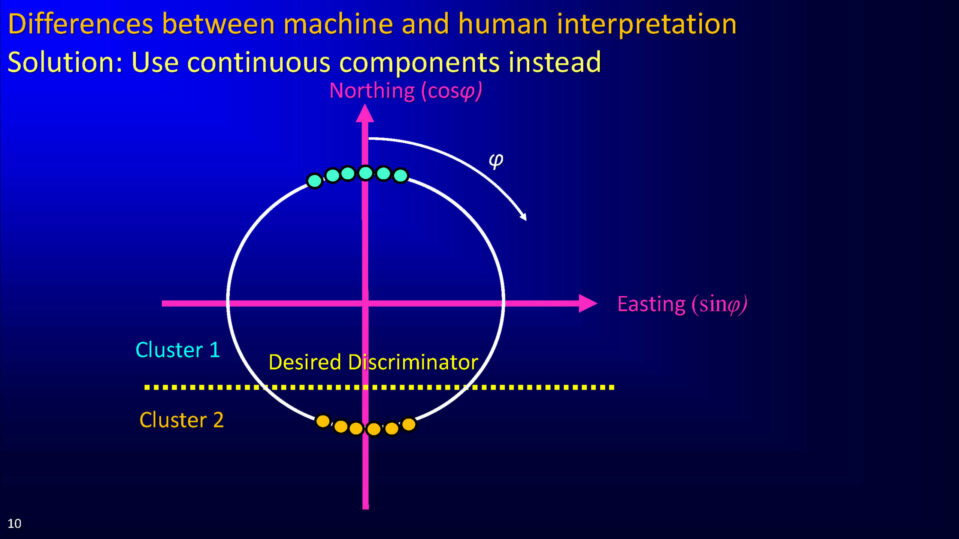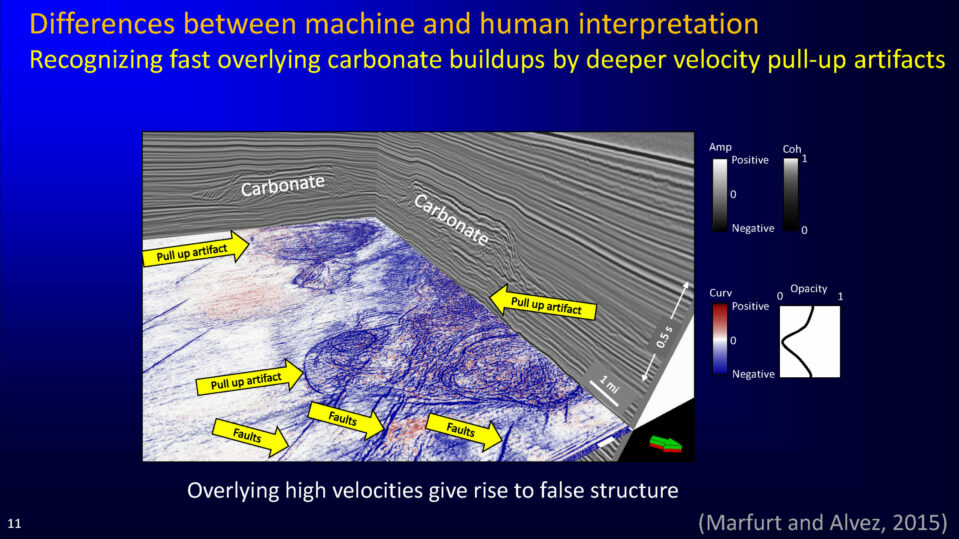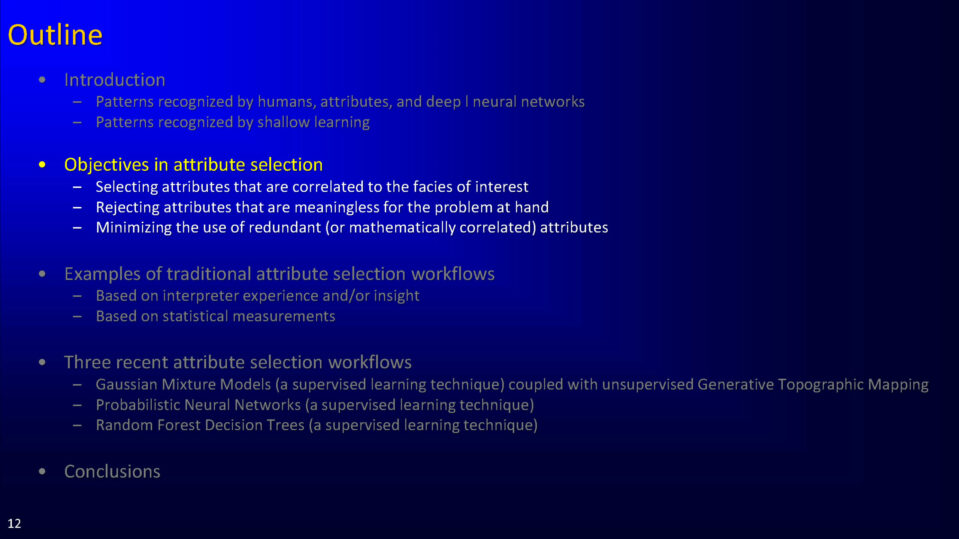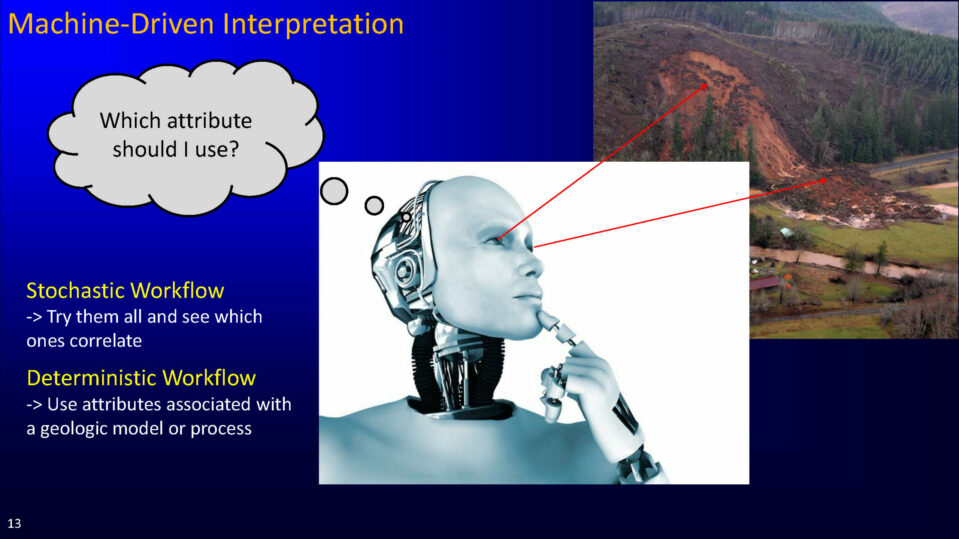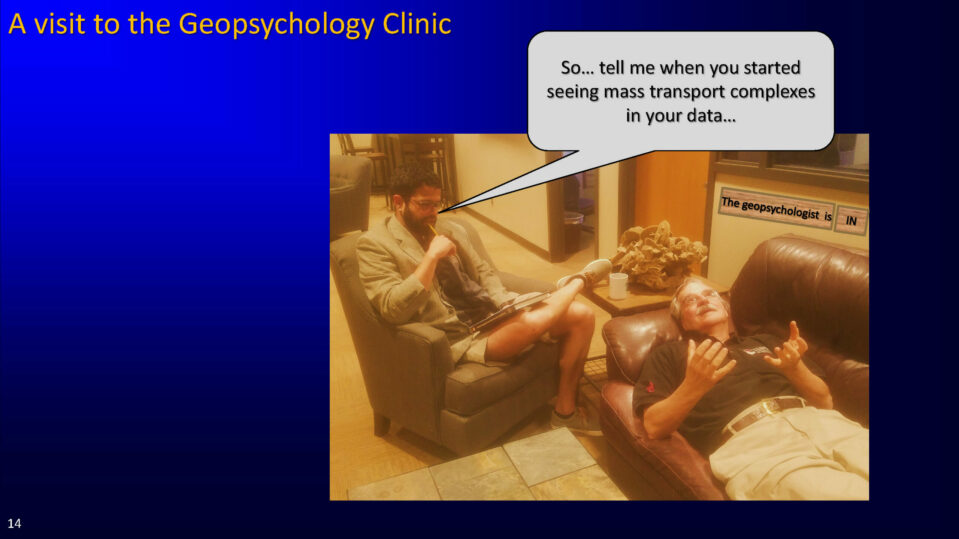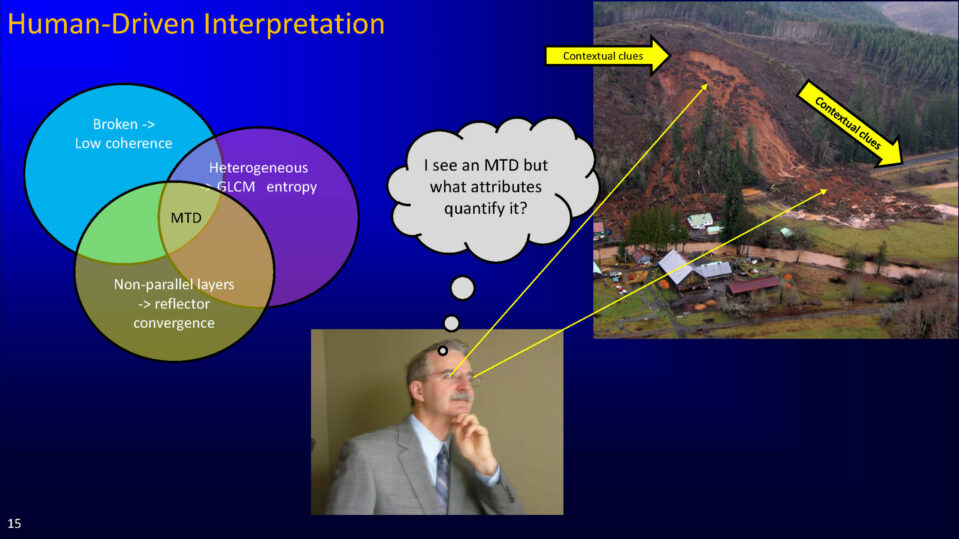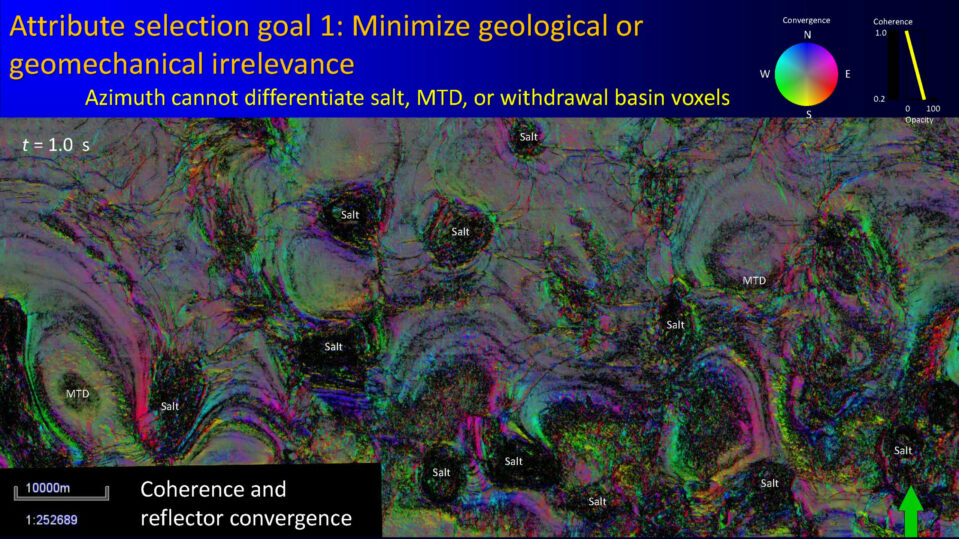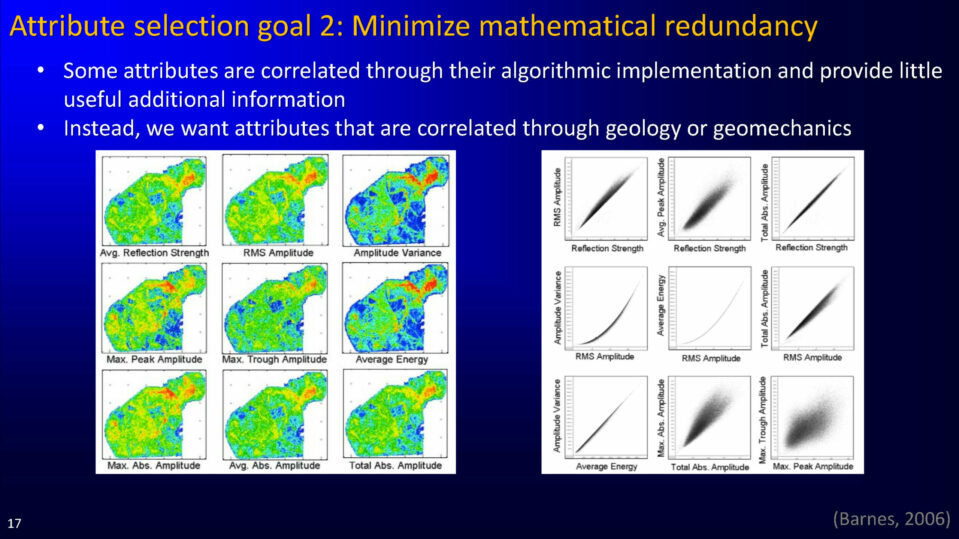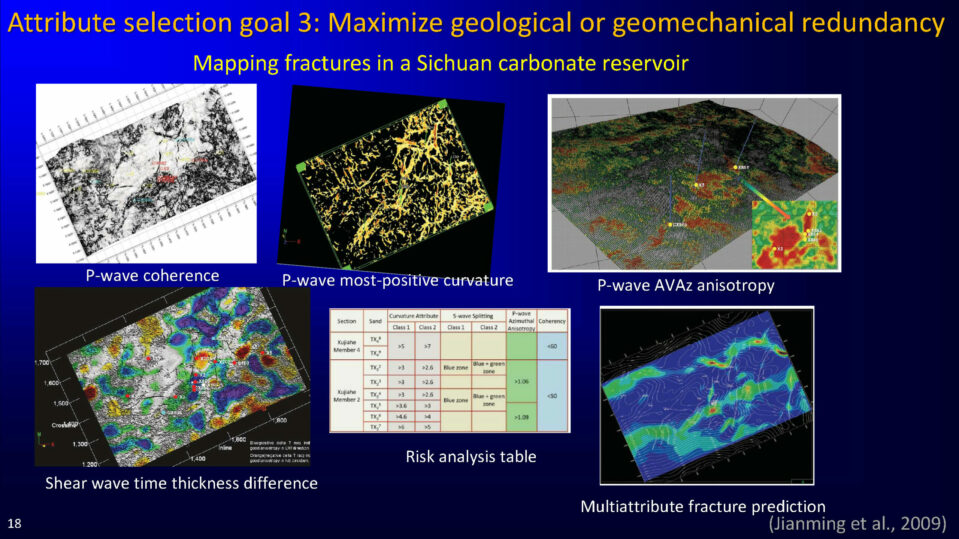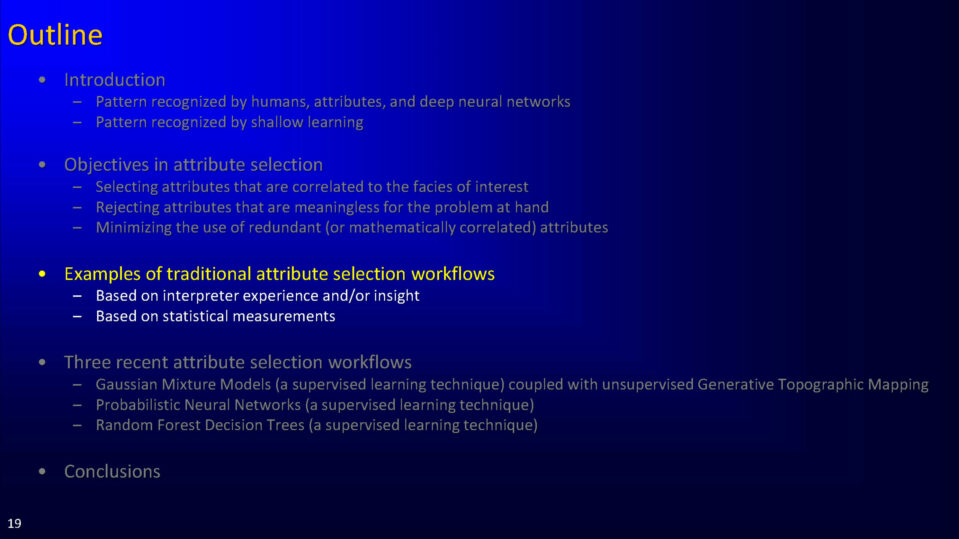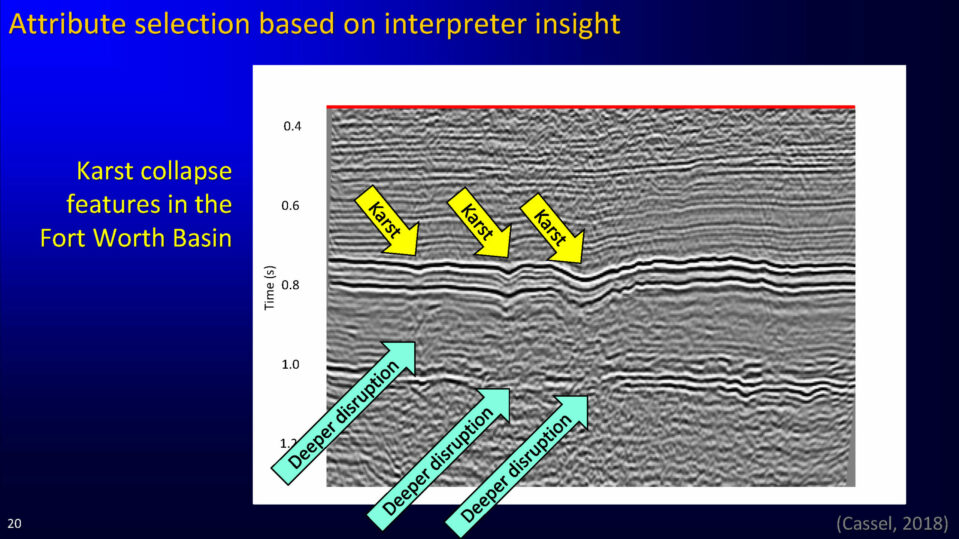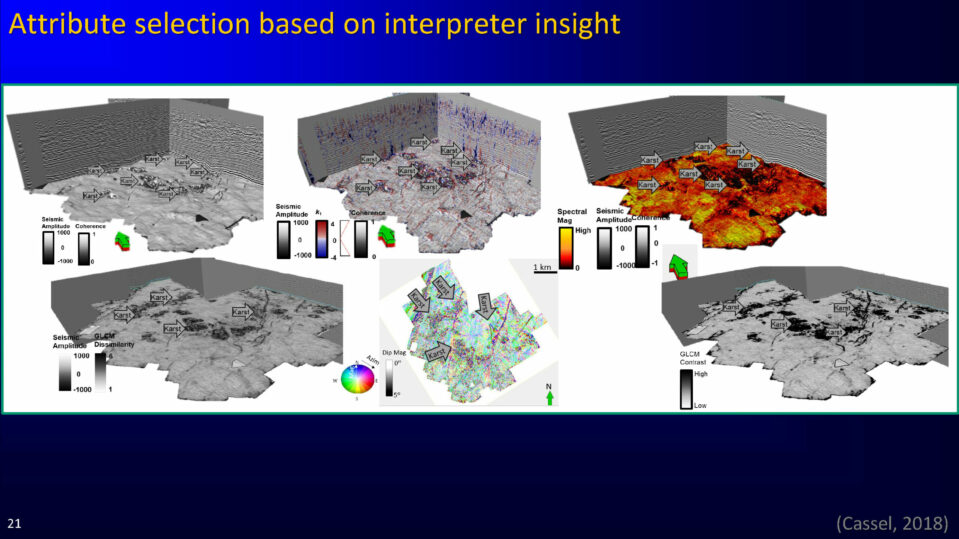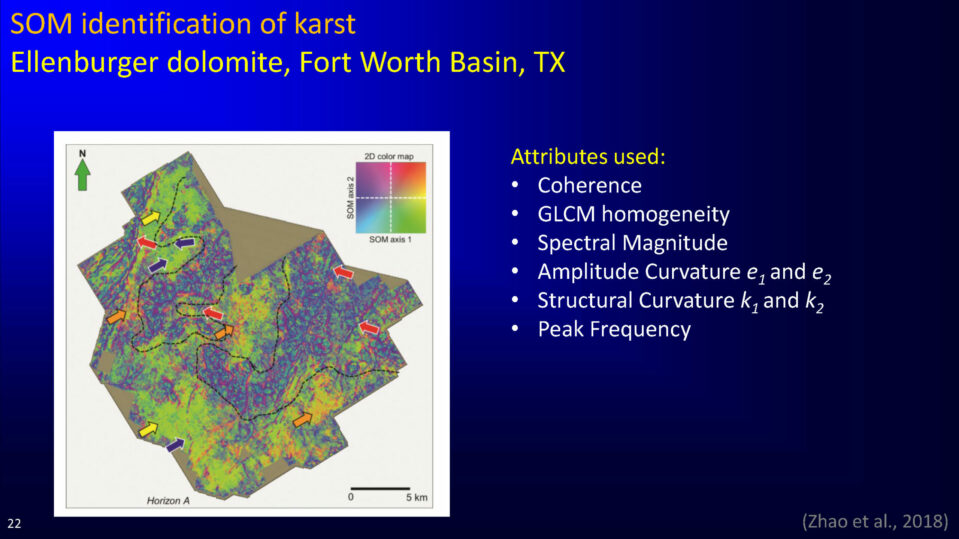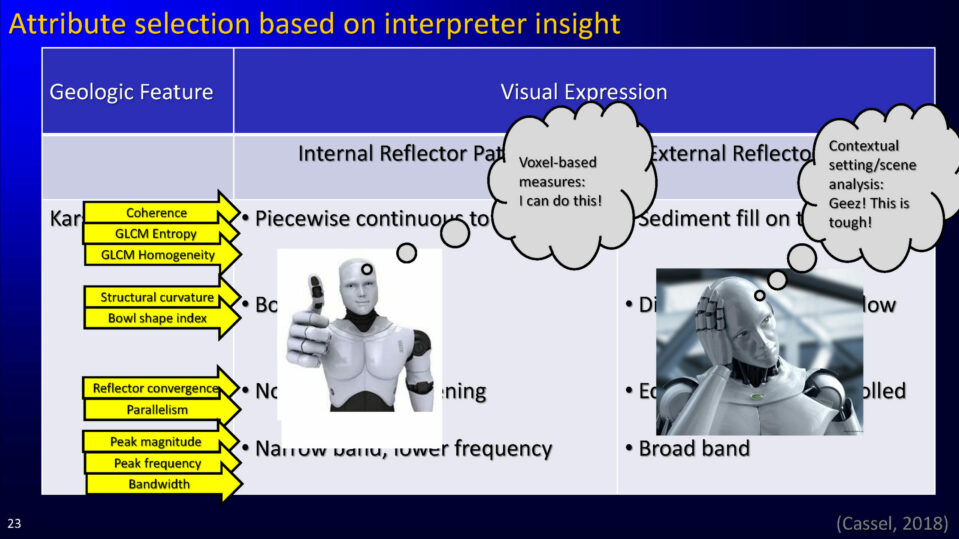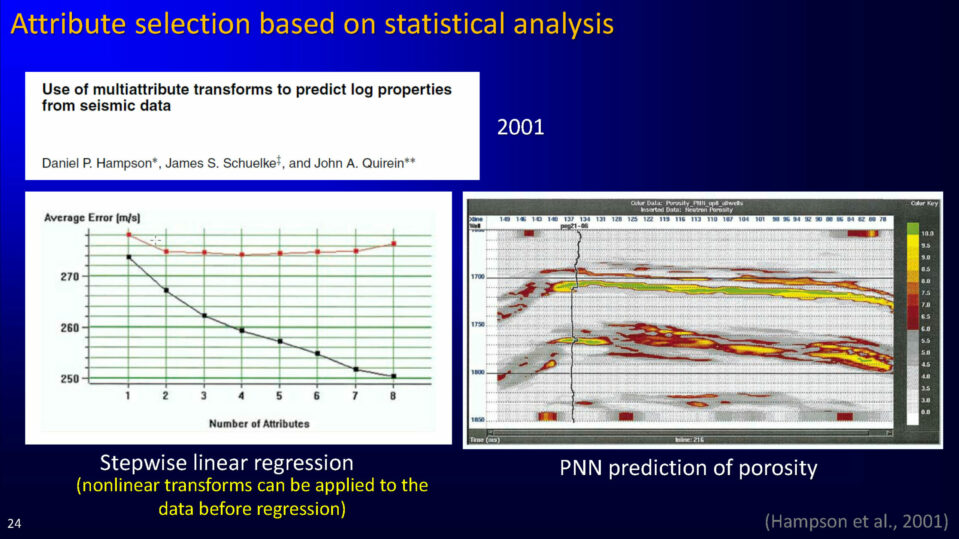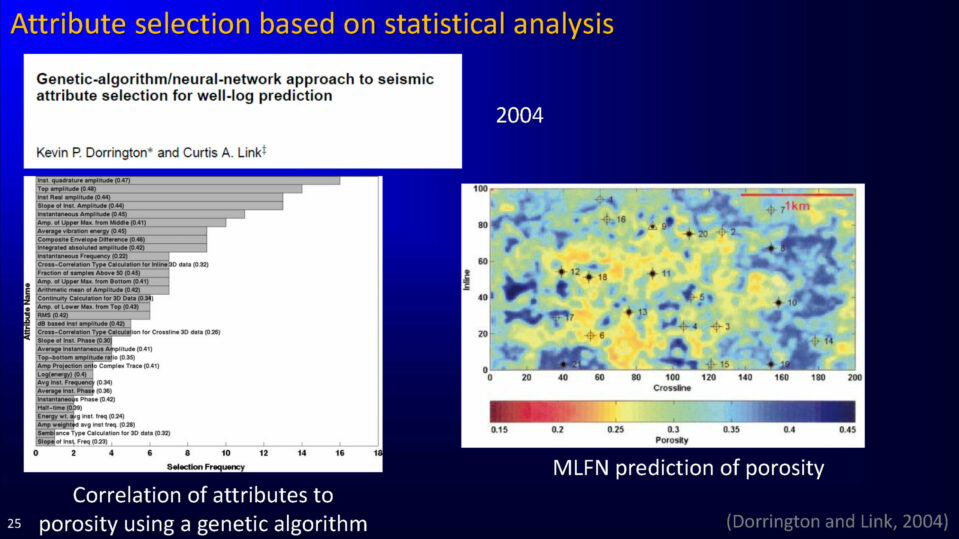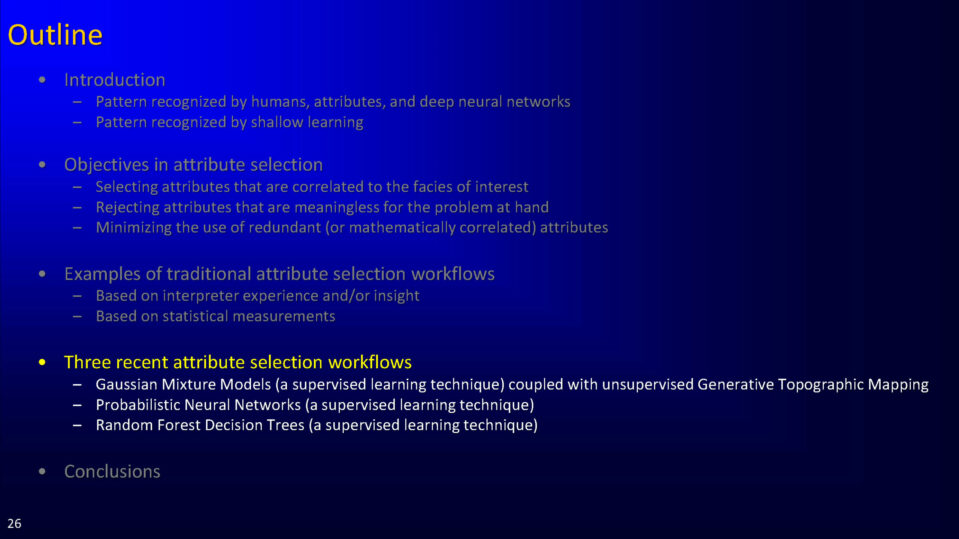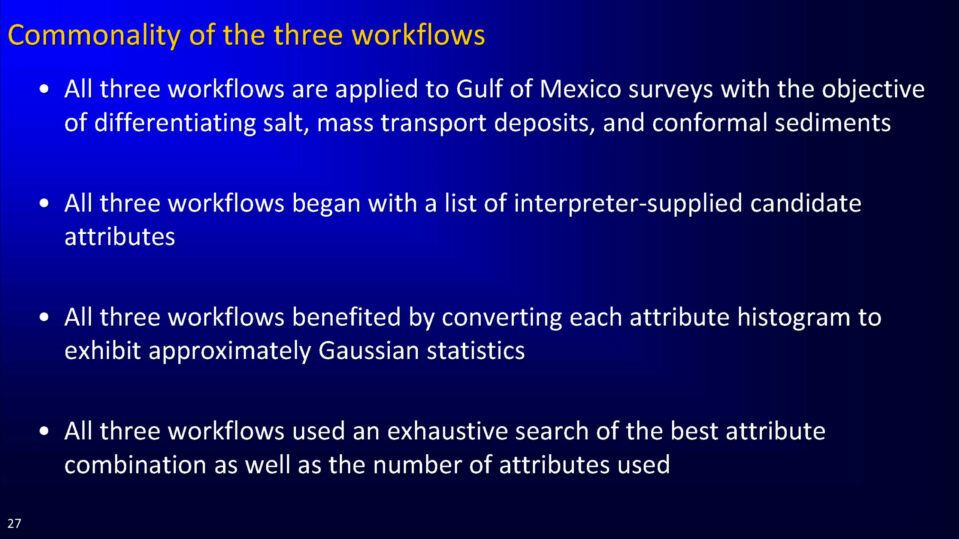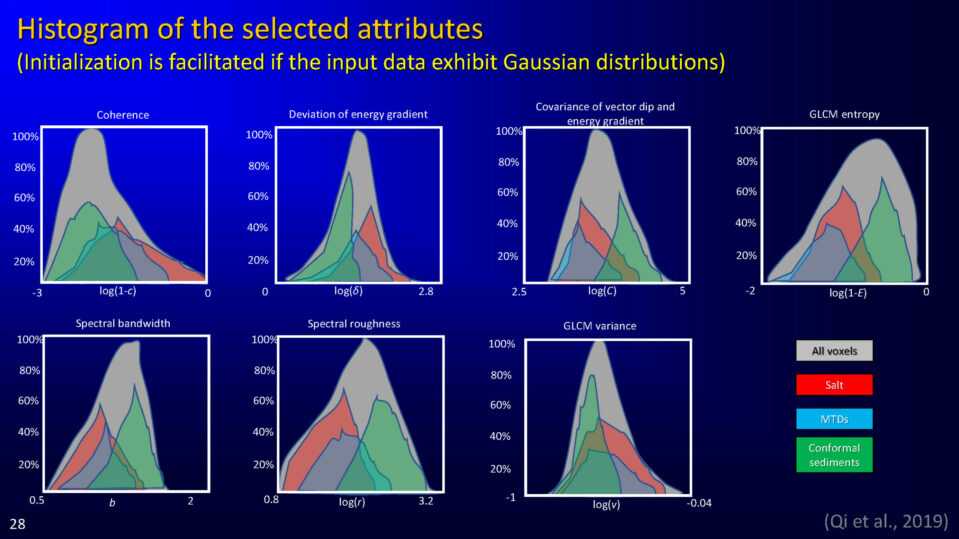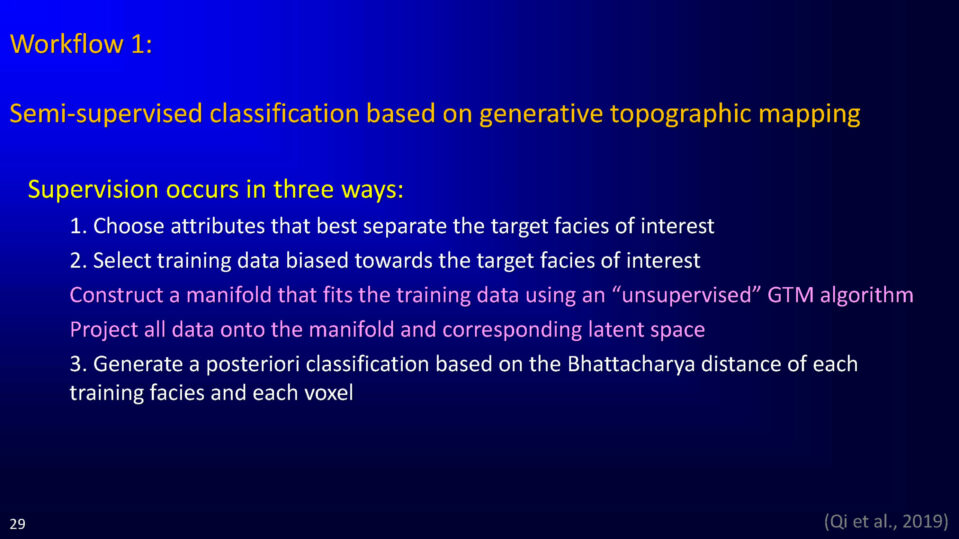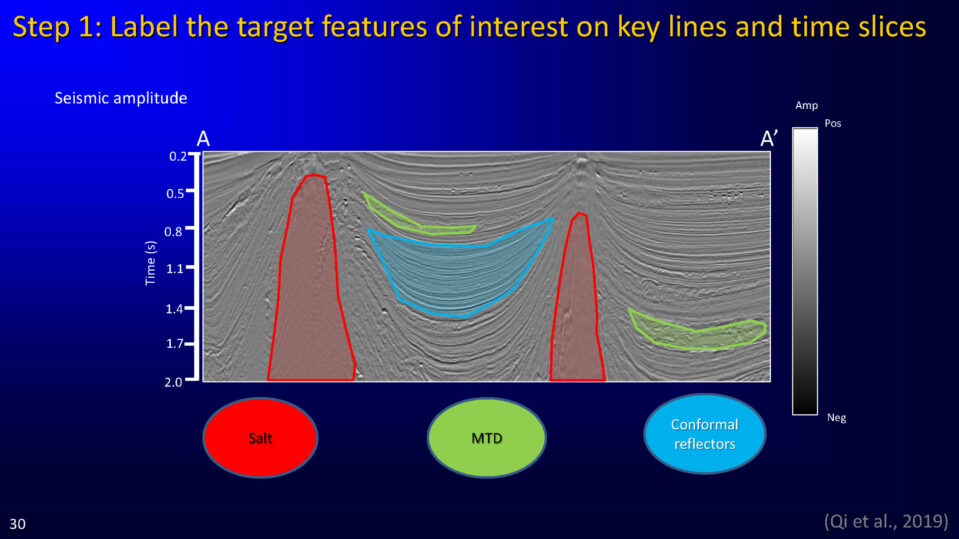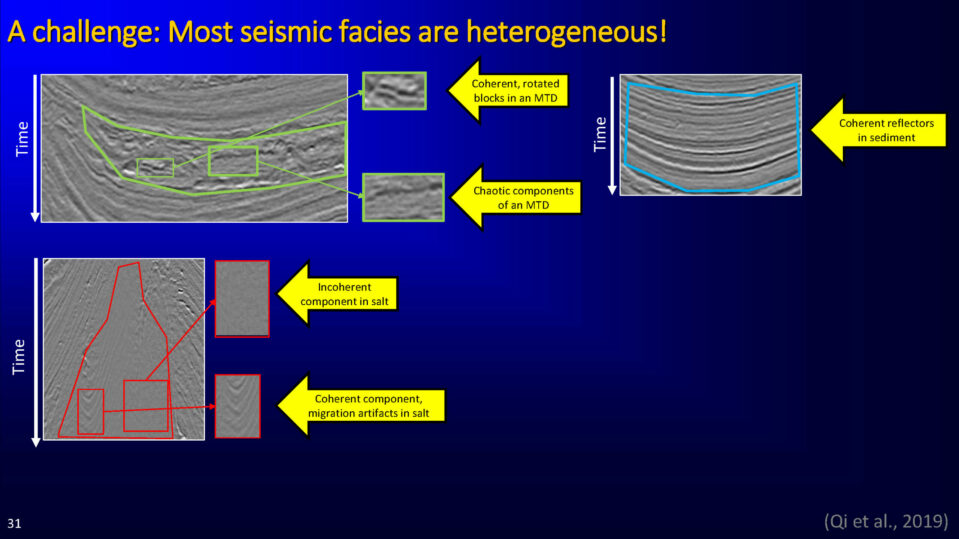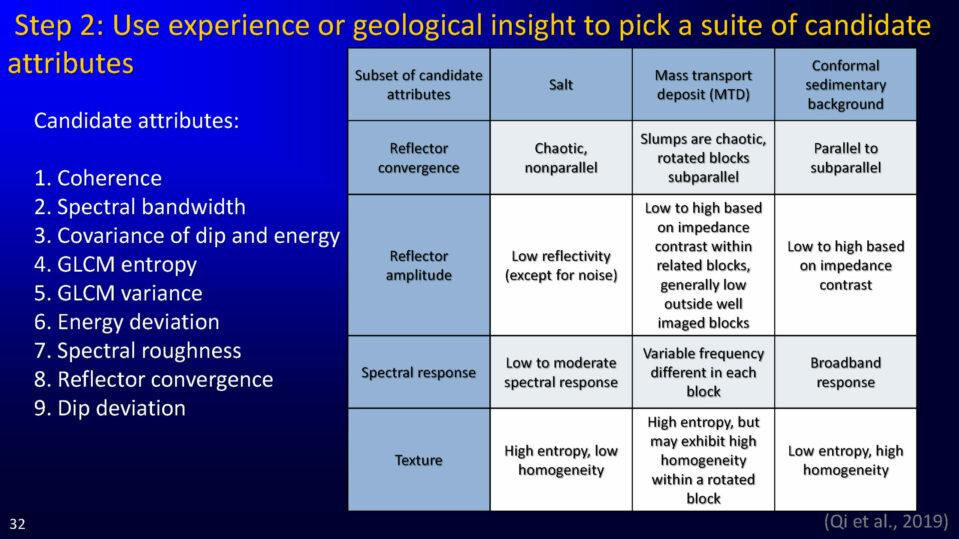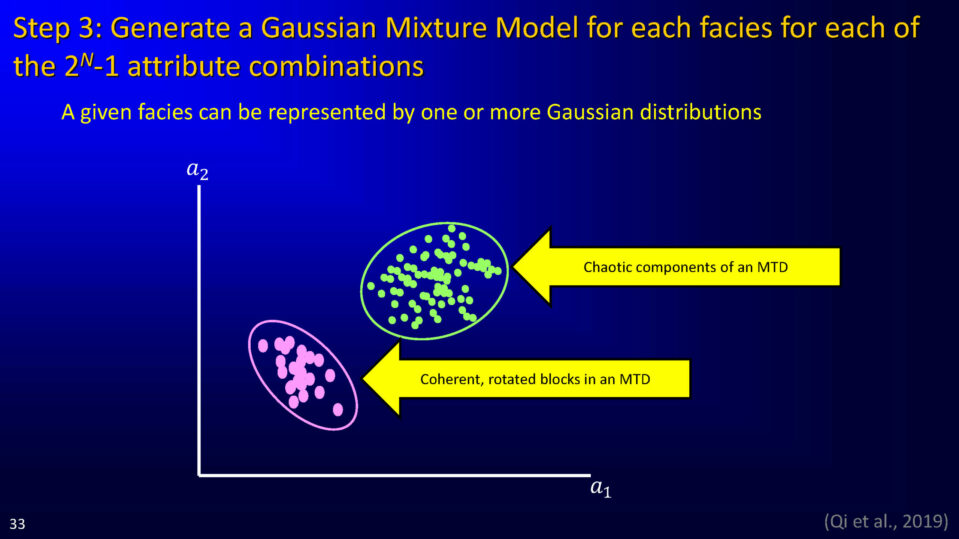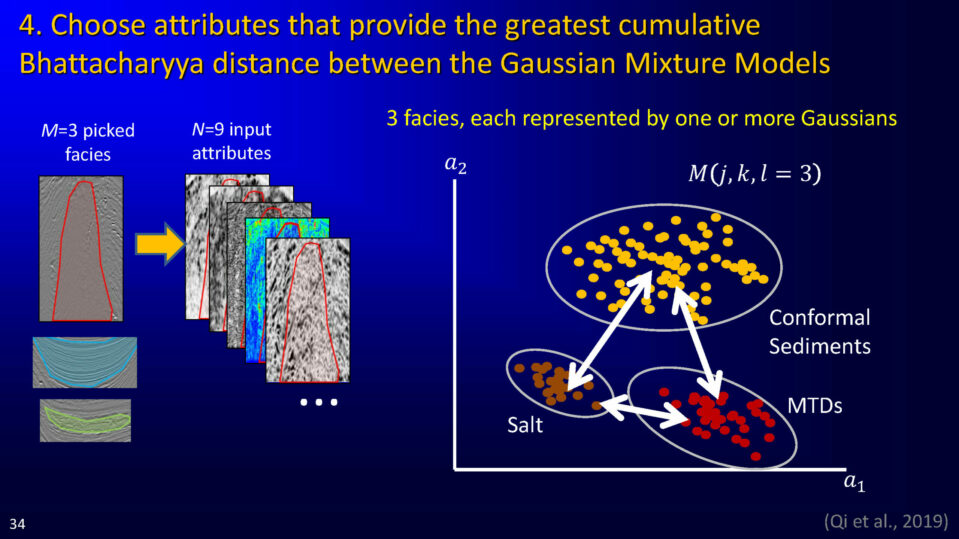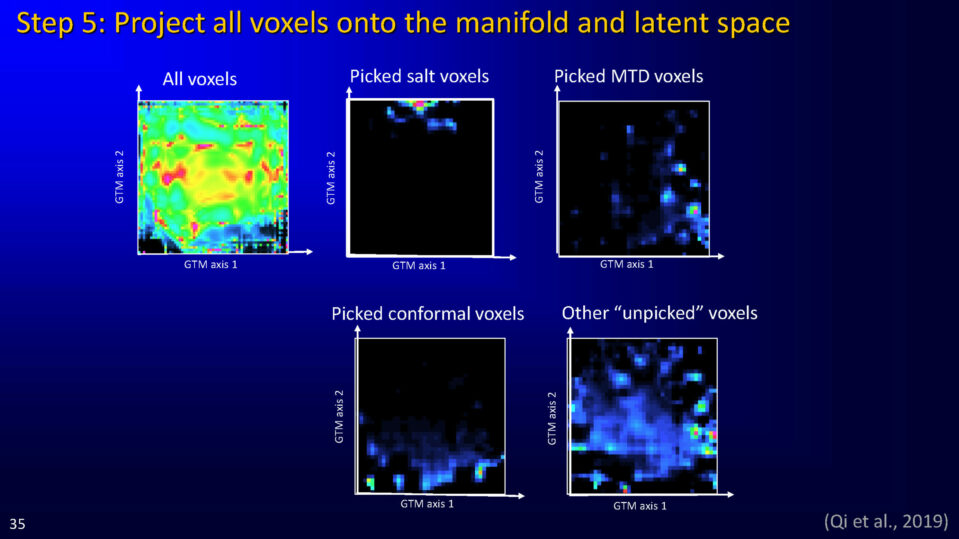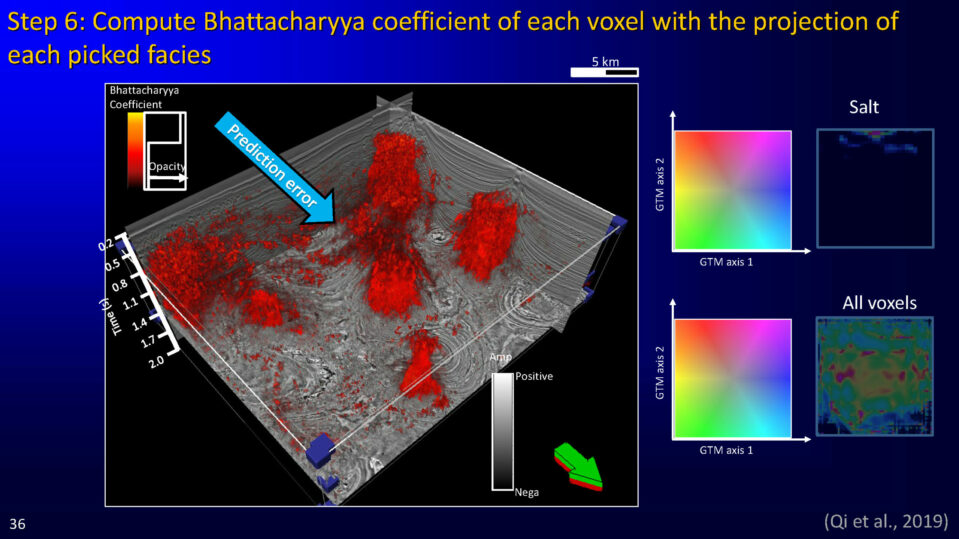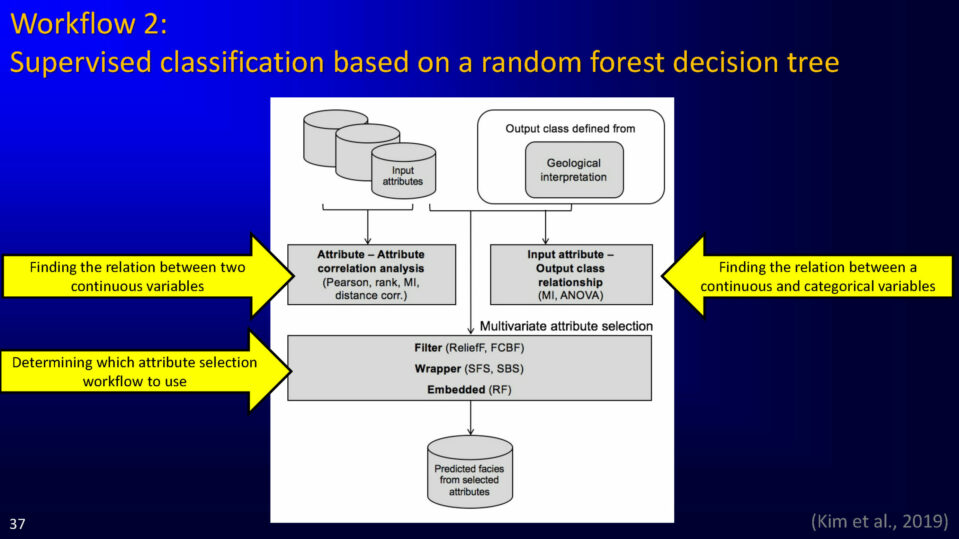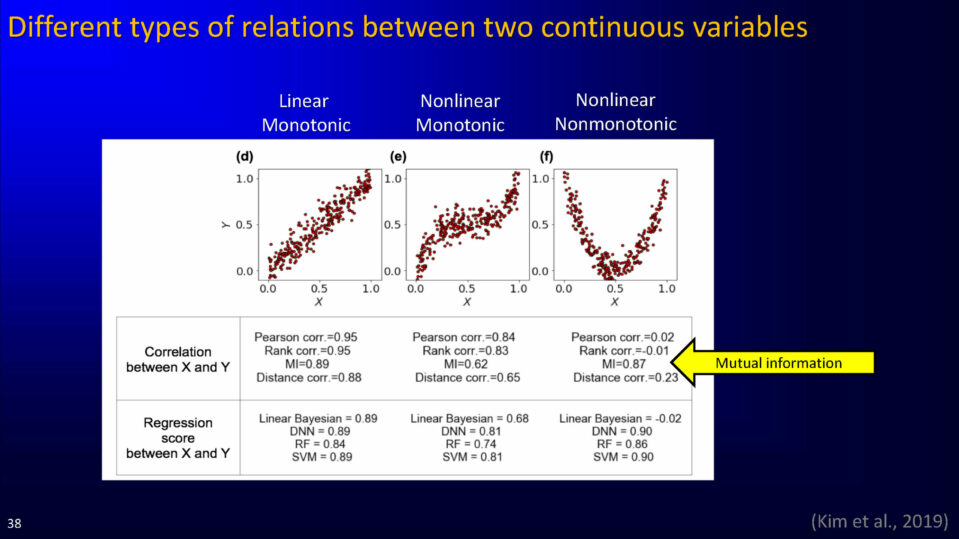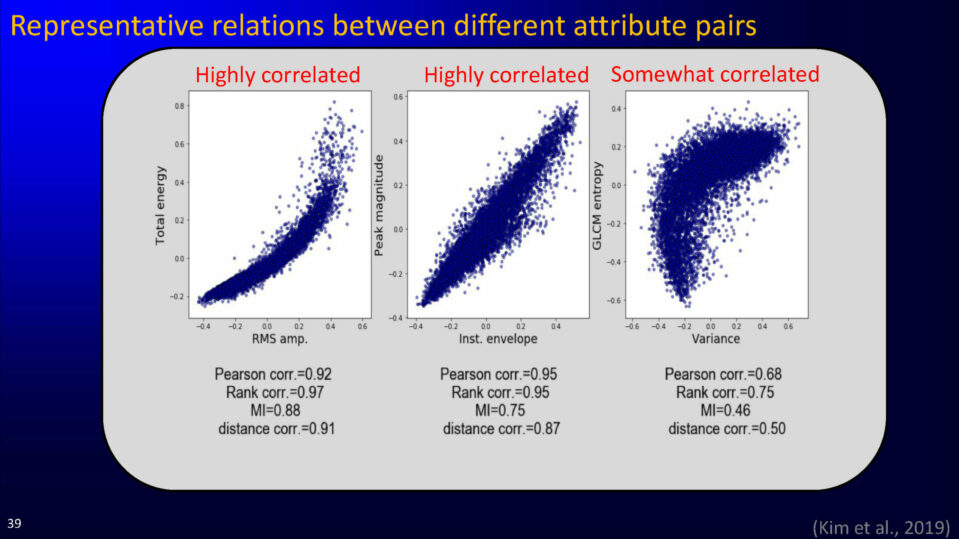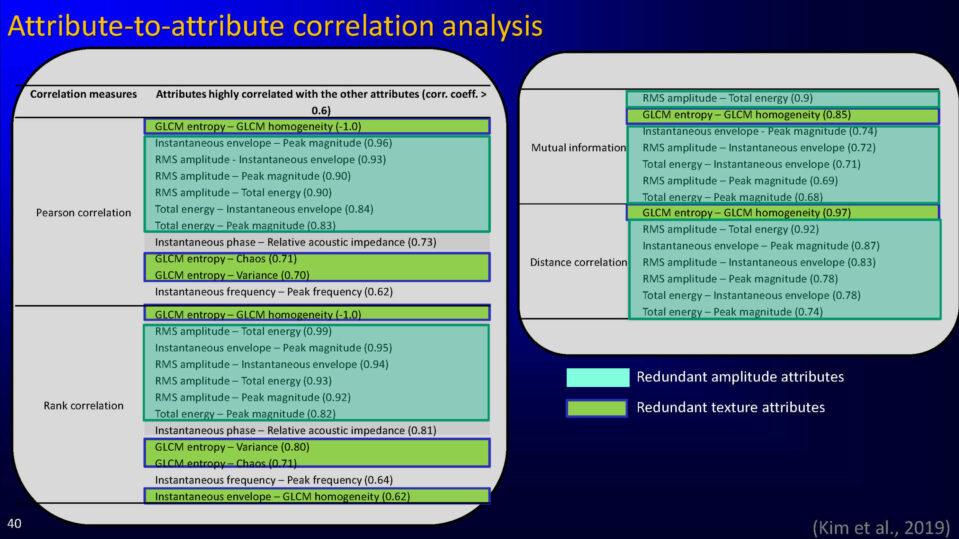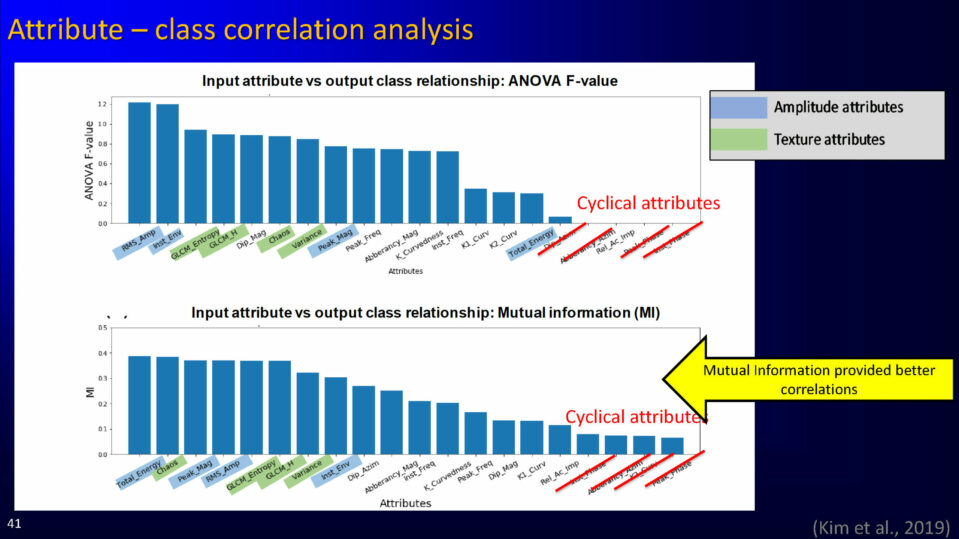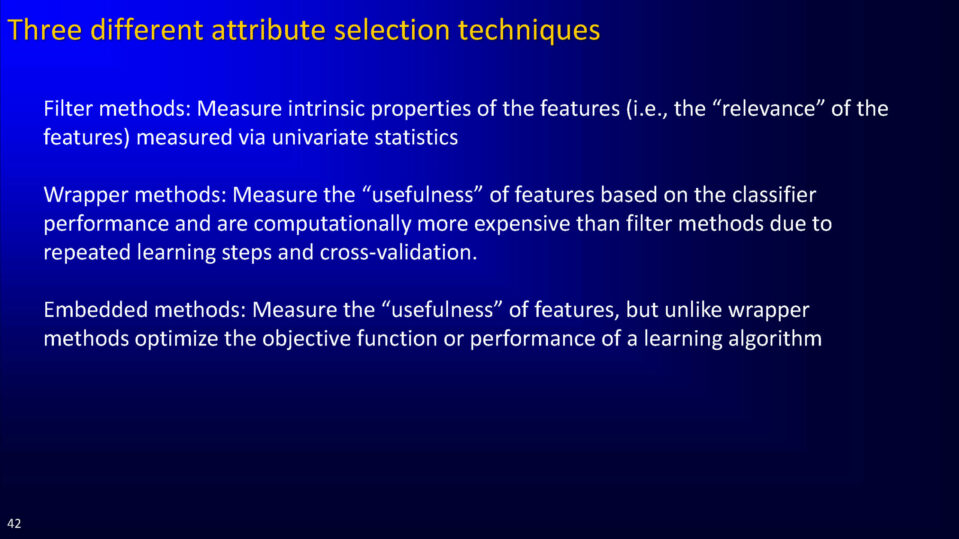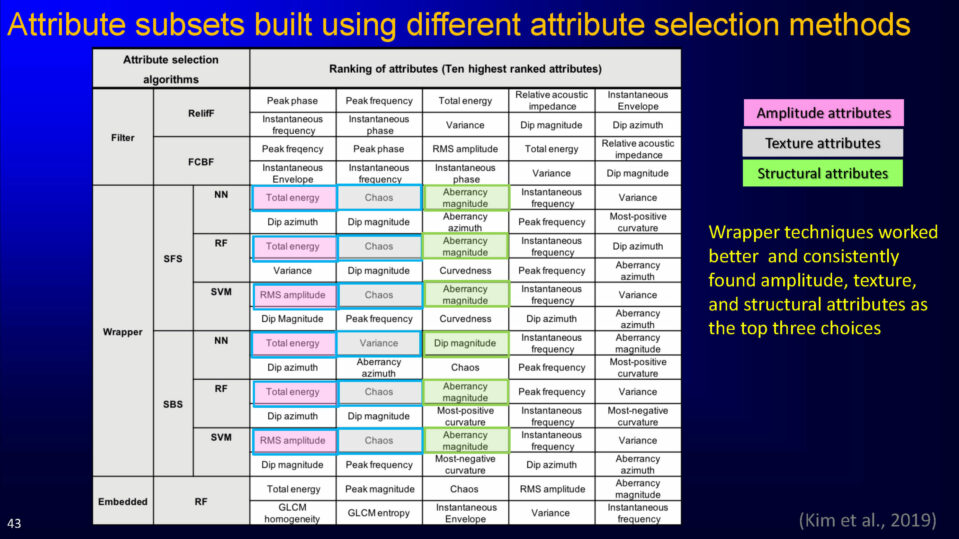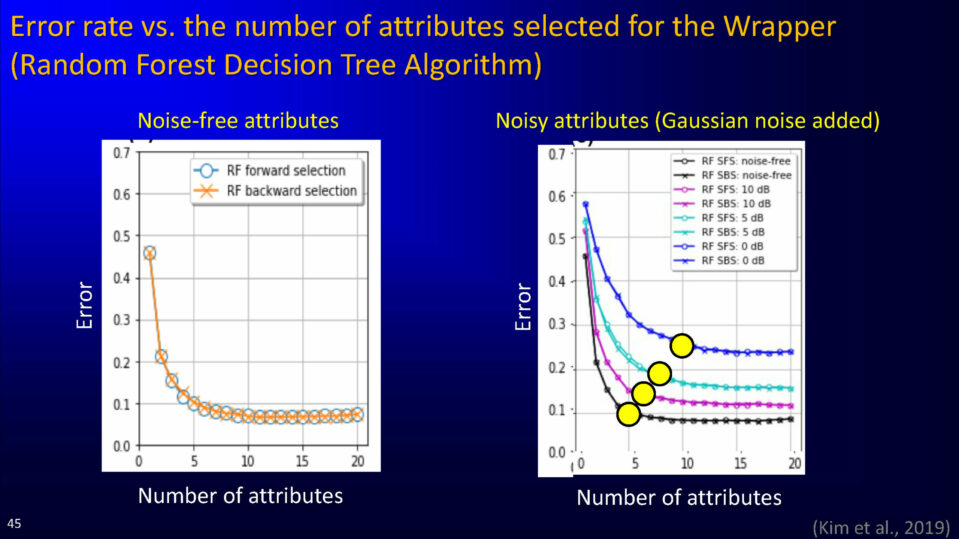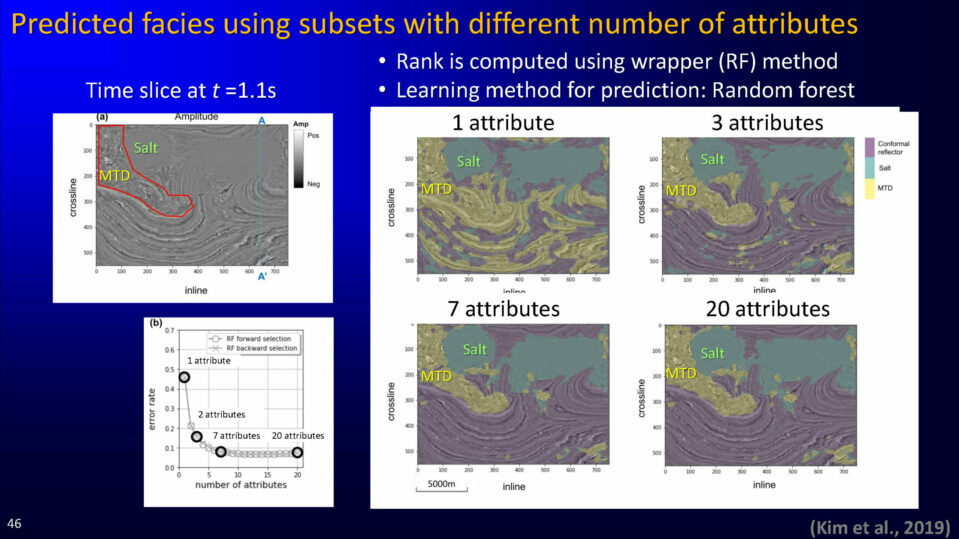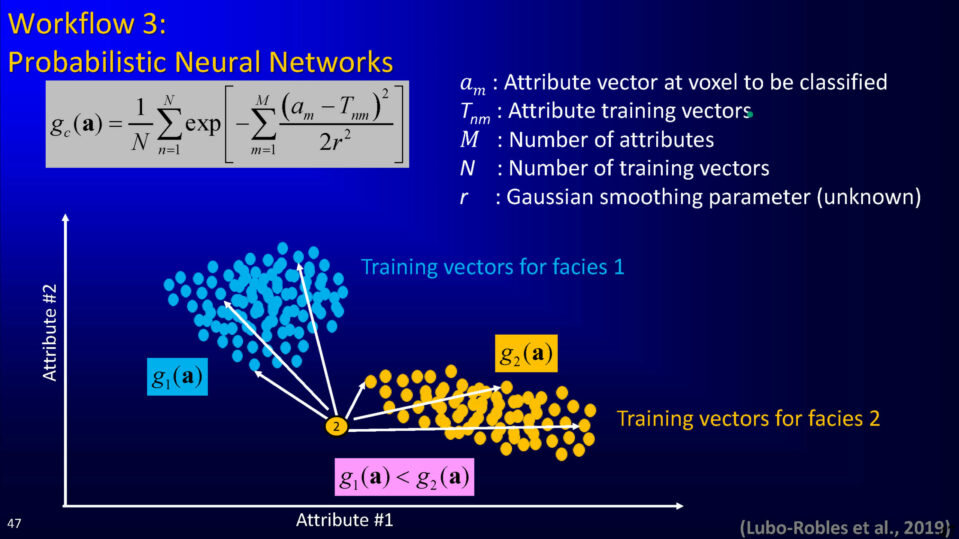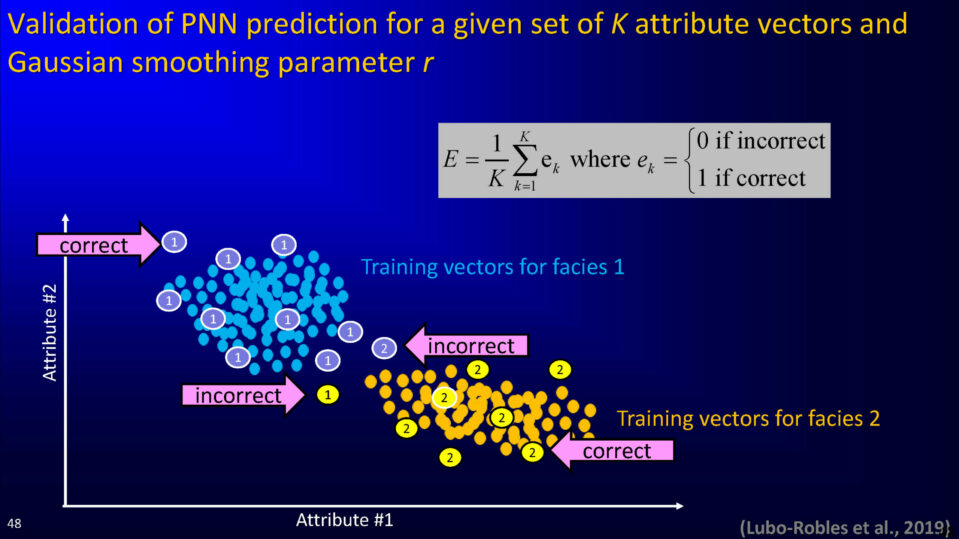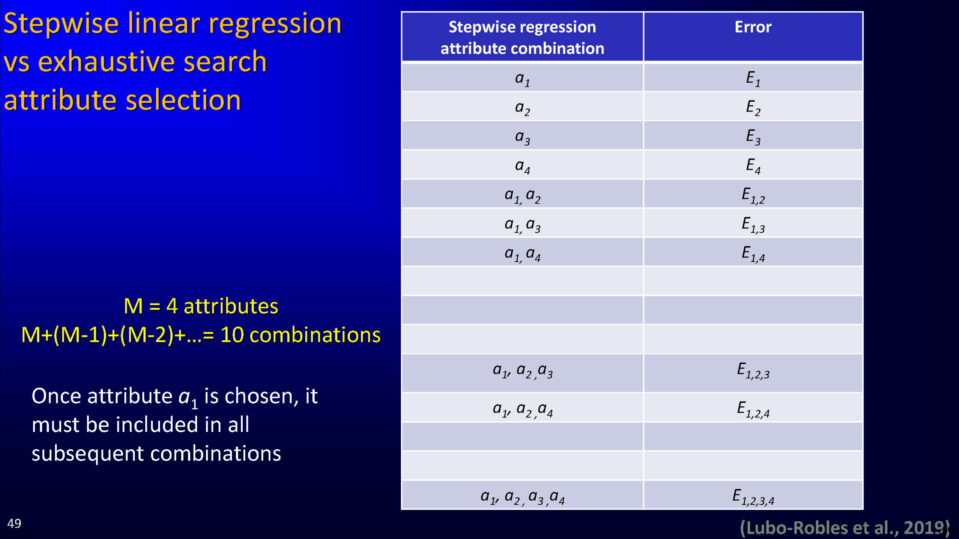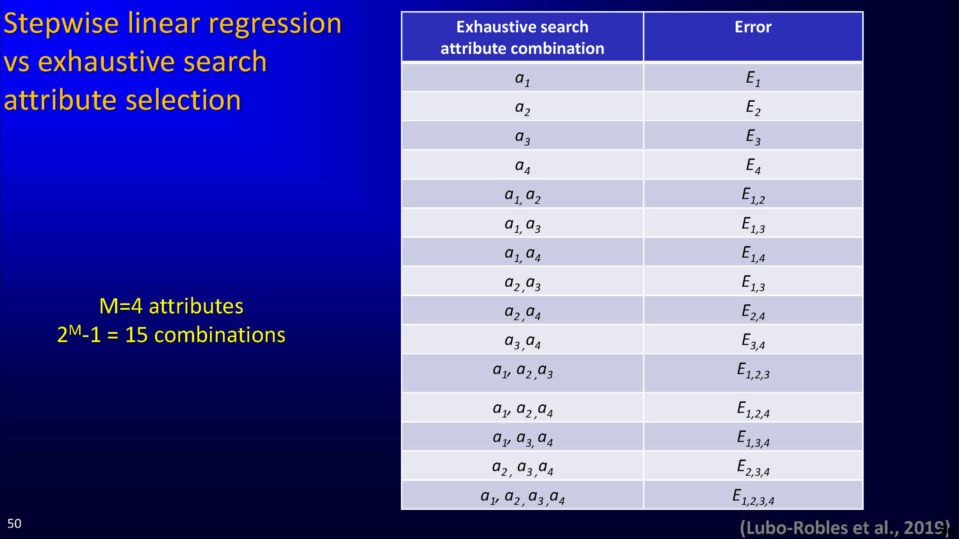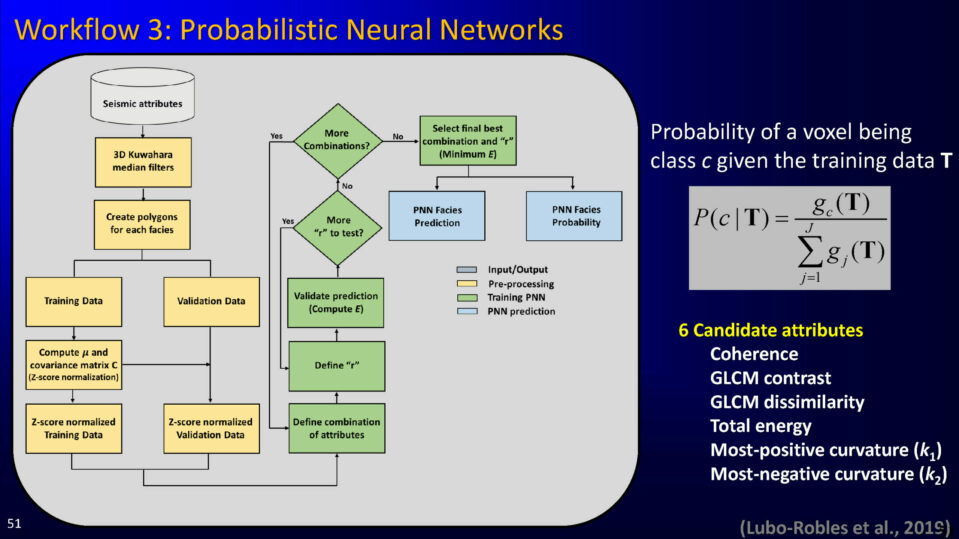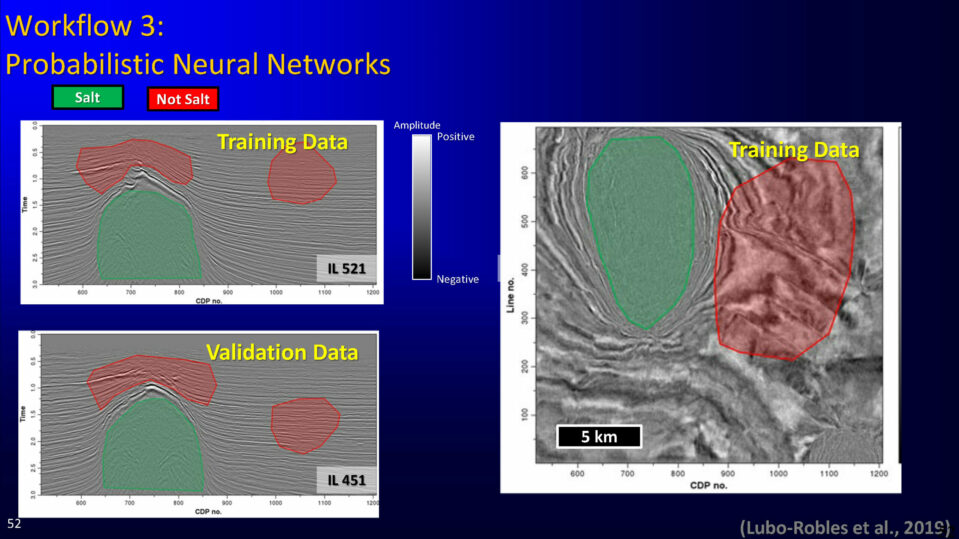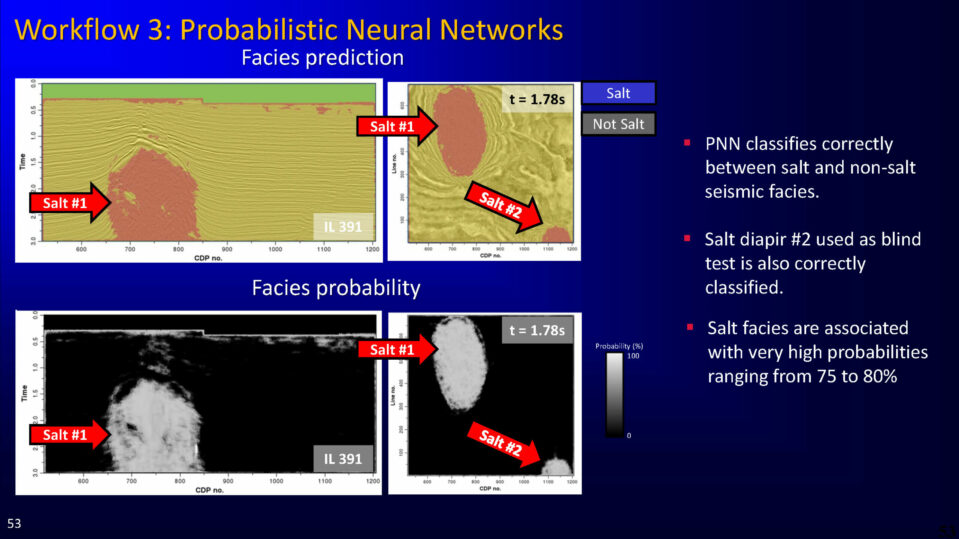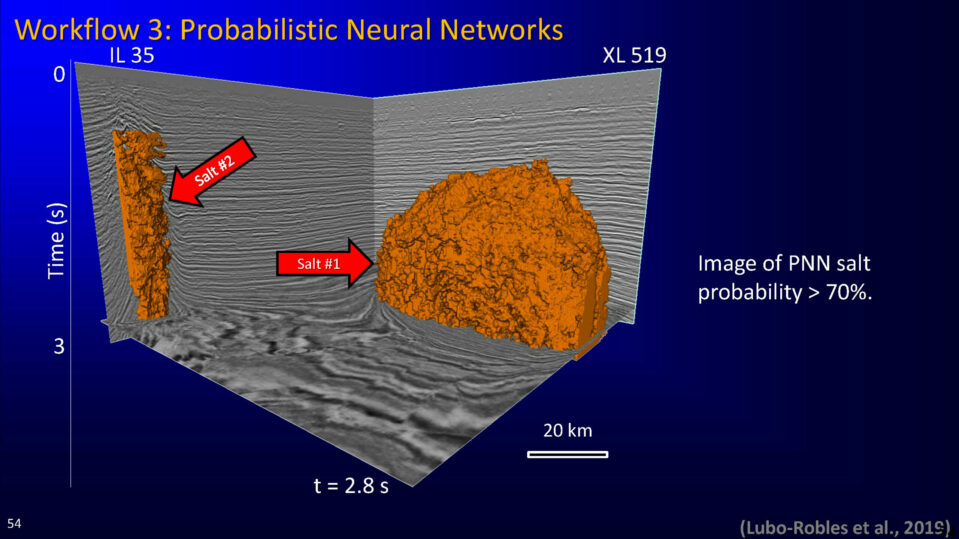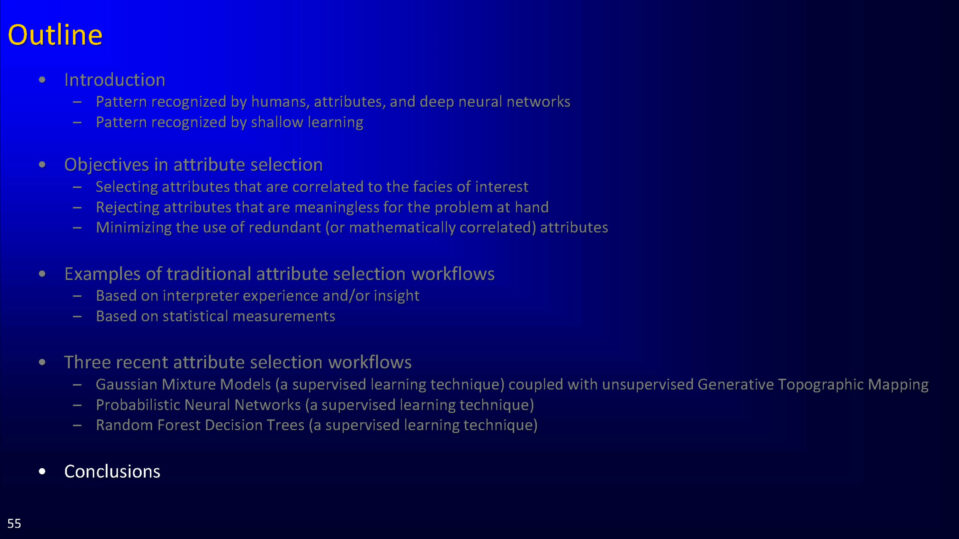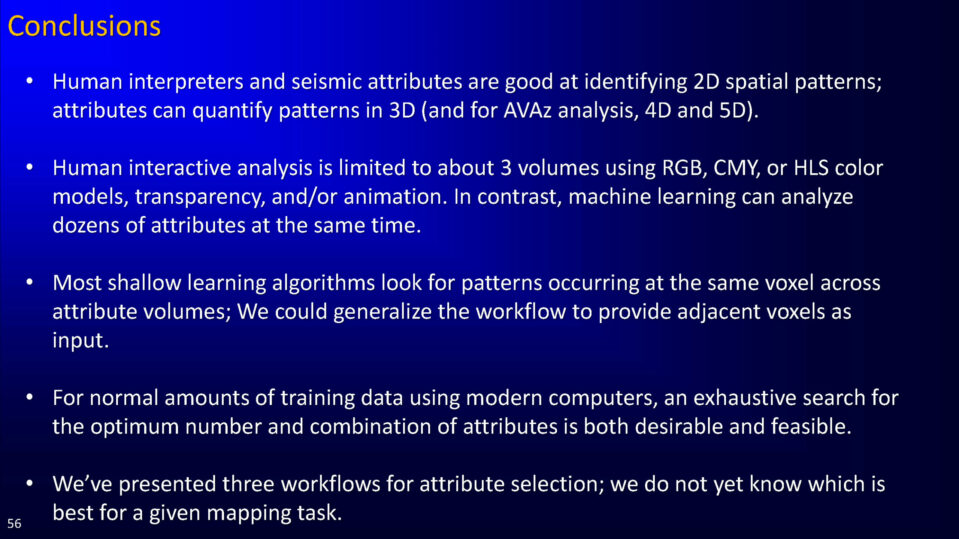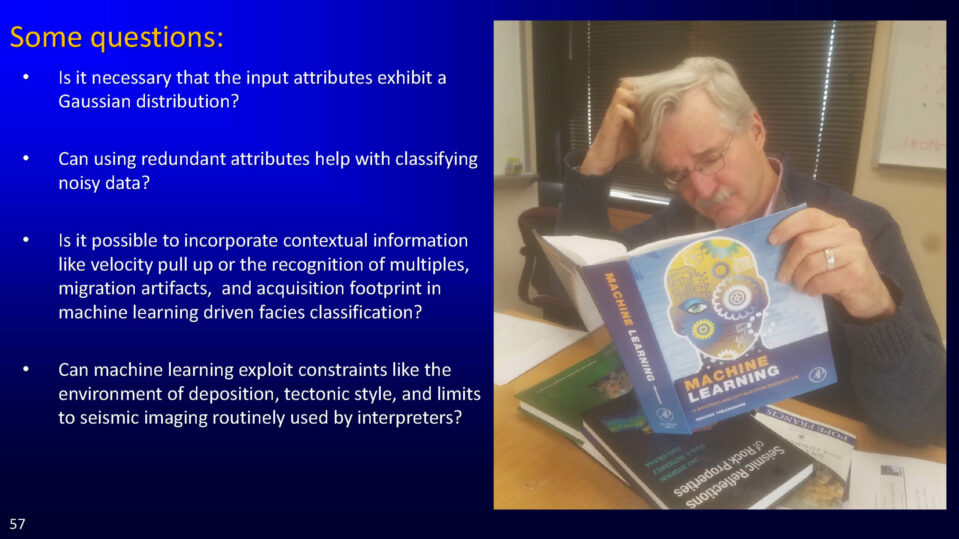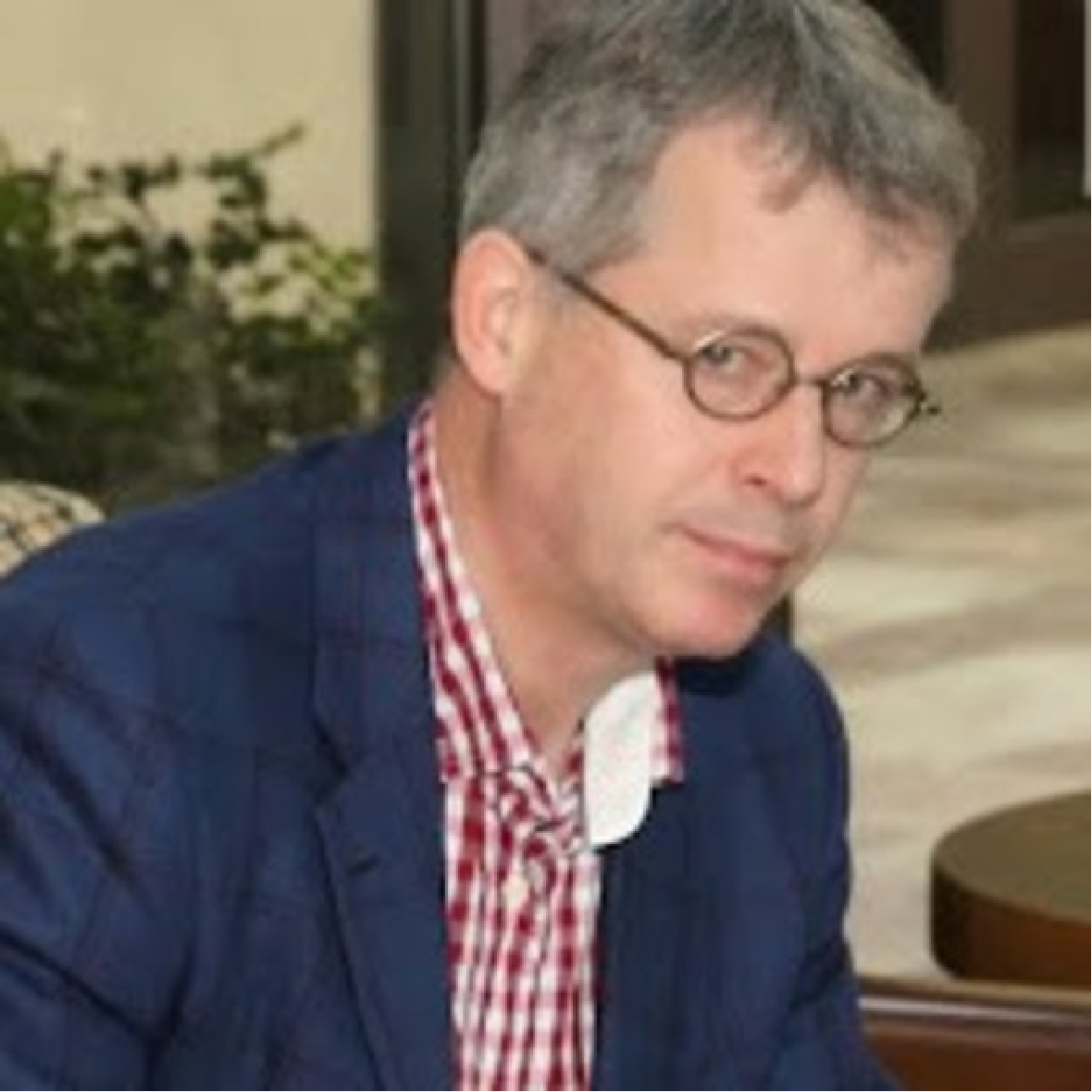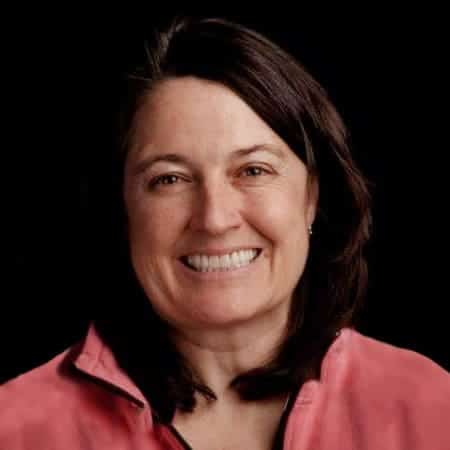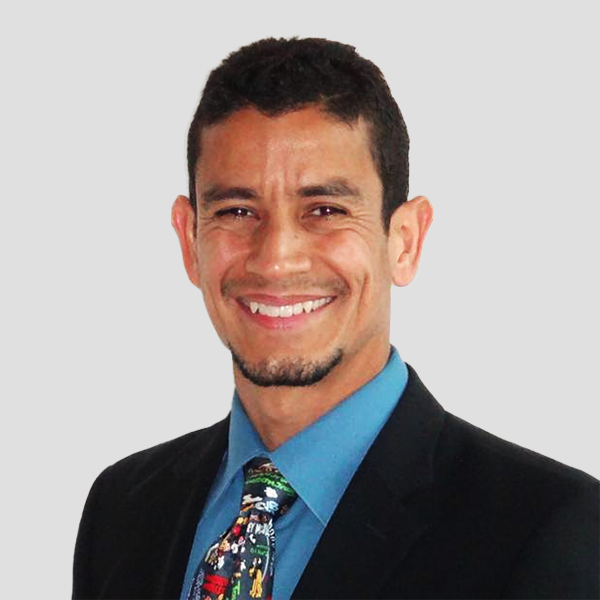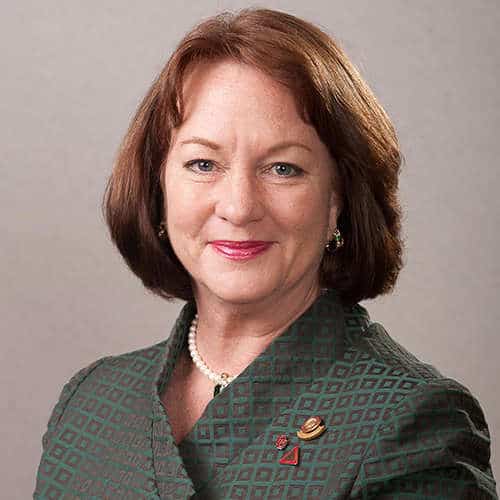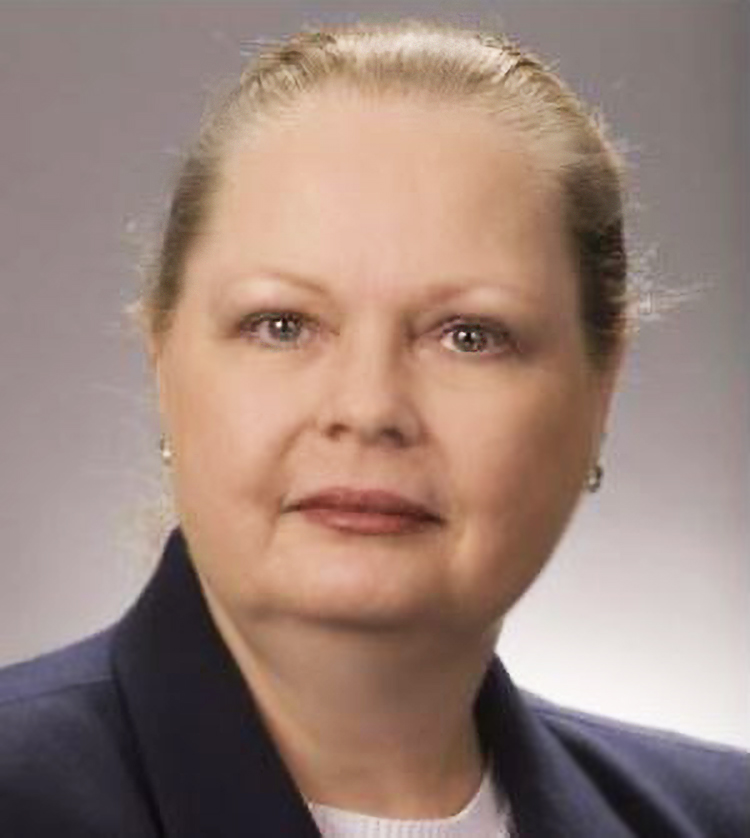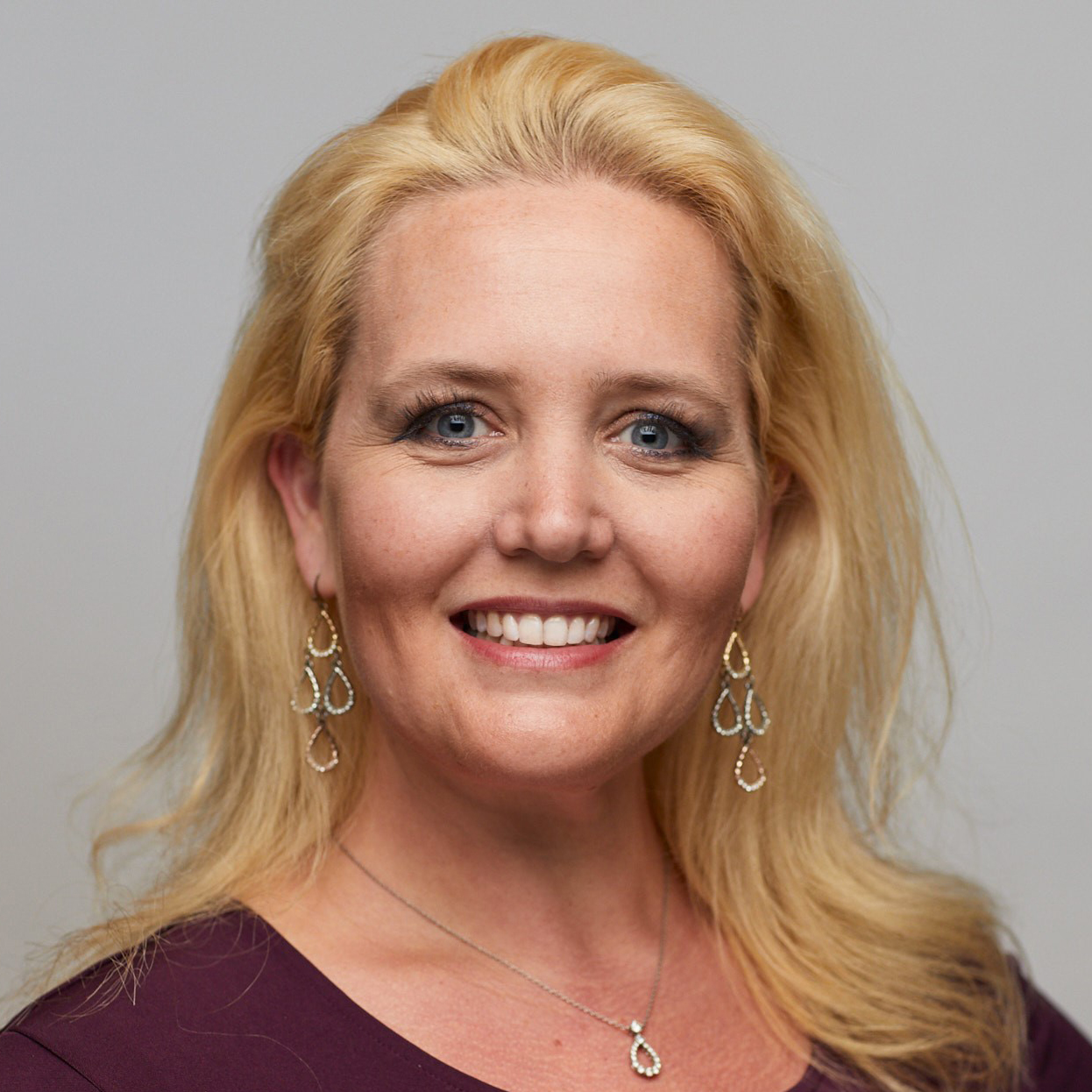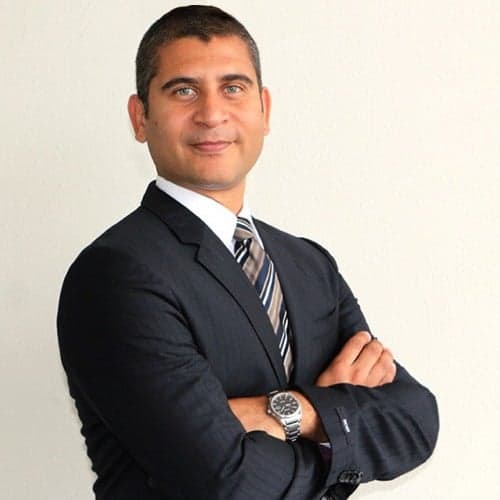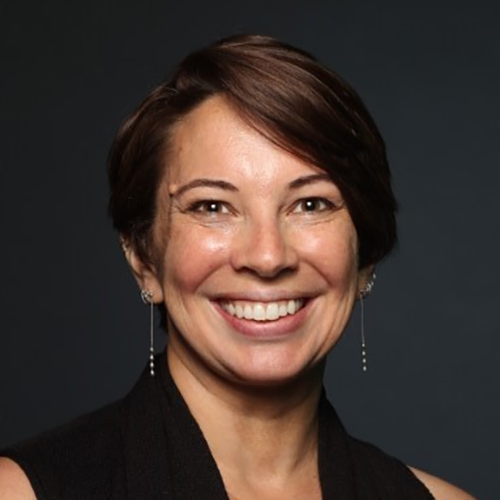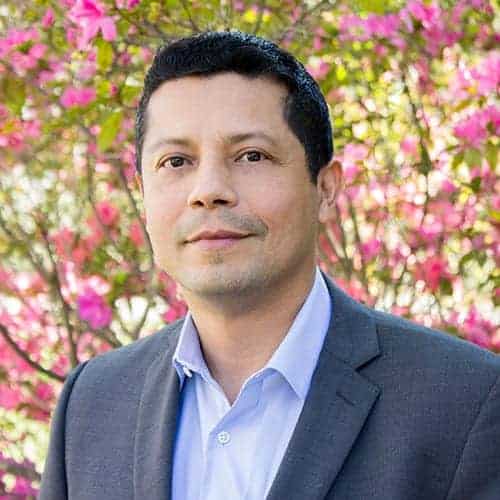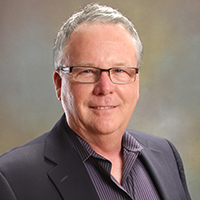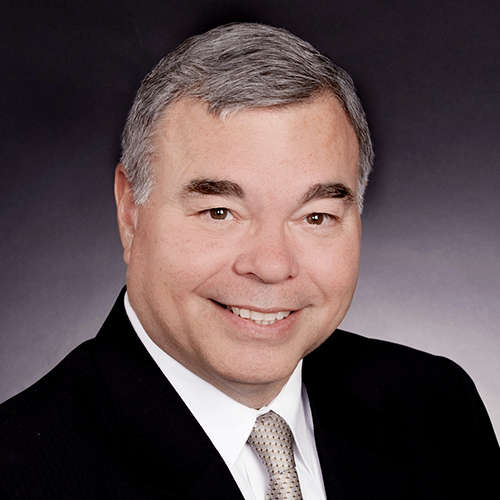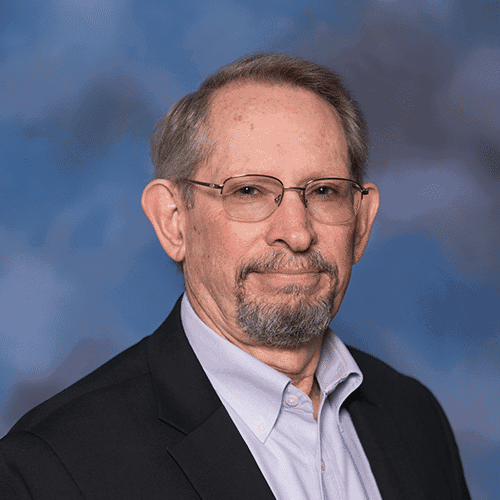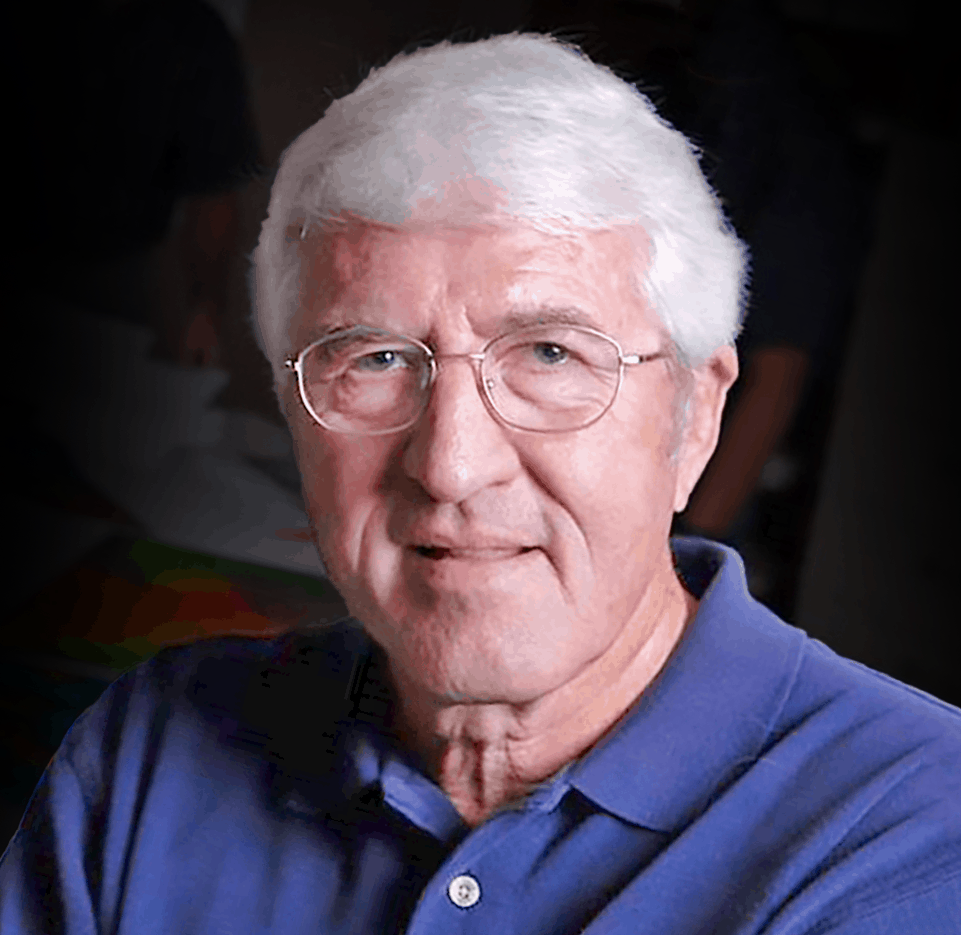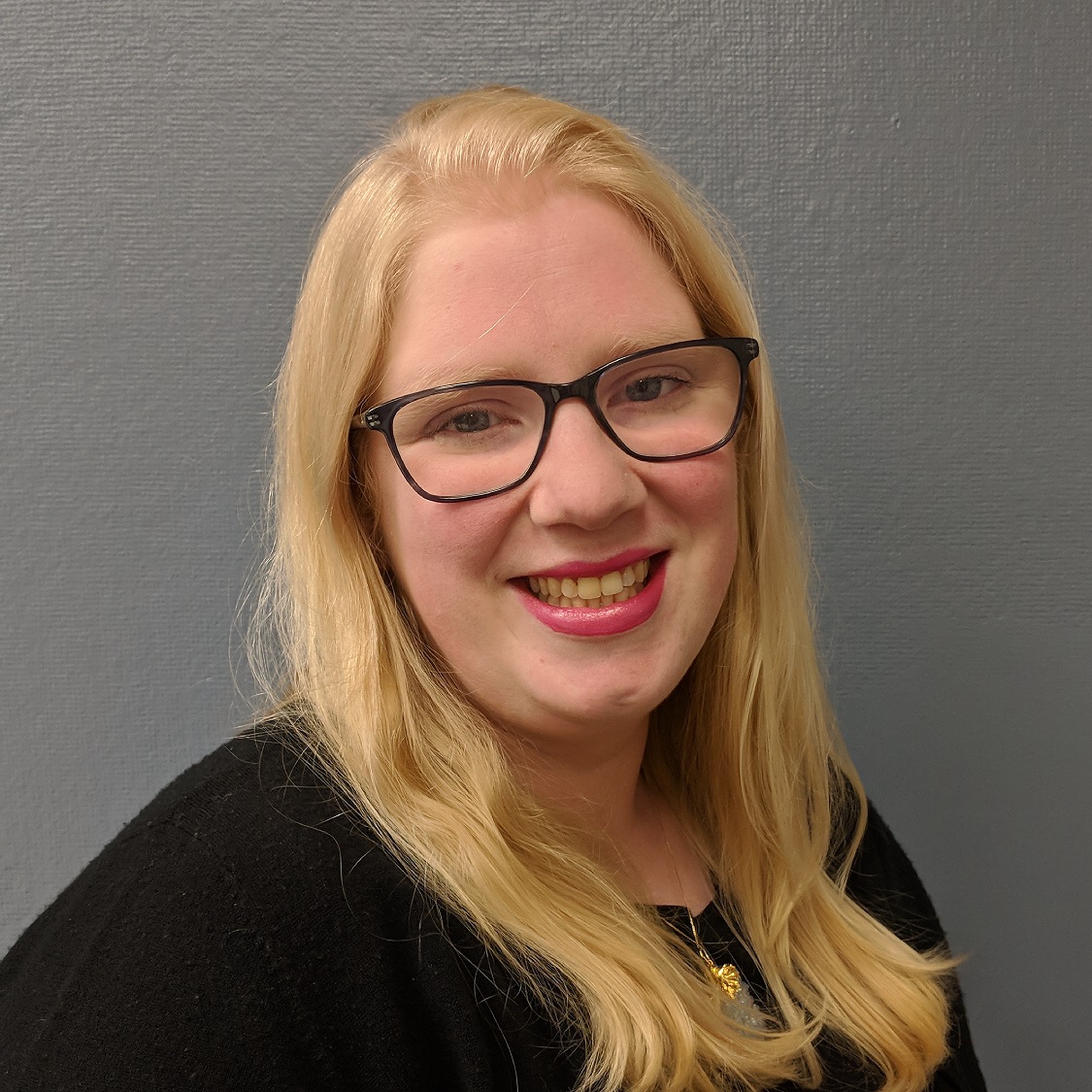Abstract:
Interpreters face two main challenges in computer-assisted seismic facies analysis. The first challenge is to define, or “label”, the facies of interest. The second challenge is to select a suite of attributes that can differentiate target facies from each other and from the background reflectivity. Accurately defining the seismic expression of a given seismic facies requires an understanding of not only geologic processes but also the limits of seismic acquisition, processing, and imaging. Our goals are to provide a good classification model in terms of validation accuracy, provide quantitative metrics (and ideally, geological insight) as to why a given attribute suite is chosen, and to minimize the computational and memory required.
In principle, a desirable attribute subset is built by detecting relevant and discarding irrelevant attributes. Relevant attributes are those that are highly correlated with the output classes using a technique called univariate attribute analysis. In contrast, redundant attributes are highly correlated with each other. We hypothesize that the redundant and useless attributes that confuse human interpreters also pose problems in machine-learning classification. Every day our lives are intertwined with applications, services, orders, products, research, and objects that are incorporated, produced, or effected in some way by Artificial Intelligence and Machine Learning. Buzz words like Deep Learning, Big Data, Supervised and Unsupervised Learning are employed routinely to describe Machine Learning, but how does this technology relate to geoscience interpretation and finding oil and gas? More importantly, do Machine Learning methods produce better results than conventional interpretation approaches, or are they simply a means of automating existing processes? Traditional interpretation approaches that geologists and geophysicists employ are physics-based solutions and now Machine Learning threatens to alter that accepted practice. Will the integration of machine learning improve our present interpretation workflows, provide moderate to no improvements (overhyped) or produce “profound” results that have not been identified previously? Machine Learning is a disruptive technology that holds great promise and this presentation will explore that potential from a geoscience interpreter’s perspective.

Dr. Kurt Marfurt
Principal Investigator, AASPI Consortium, the University of Oklahoma
Kurt J. Marfurt joined The University of Oklahoma in 2007 where he serves as the Frank and Henrietta Schultz Professor of Geophysics within the ConocoPhillips School of Geology and Geophysics. Marfurt’s primary research interest is in the development and calibration of new seismic attributes to aid in seismic processing, seismic interpretation, and reservoir characterization. Recent work has focused on applying coherence, spectral decomposition, structure-oriented filtering, and volumetric curvature to mapping fractures and karst with a particular focus on resource plays. Marfurt earned a Ph.D. in applied geophysics at Columbia University’s Henry Krumb School of Mines in New York in 1978 where he also taught as an Assistant Professor for four years. He worked 18 years in a wide range of research projects at Amoco’s Tulsa Research Center after which he joined the University of Houston for eight years as a Professor of Geophysics and the Director of the Allied Geophysics Lab. He has received the SEG best paper (for coherence), SEG best presentation (for seismic modeling), as a coauthor with Satinder Chopra best SEG poster (one on curvature, one on principal component analysis) and best AAPG technical presentation, and as a coauthor with Roderick Perez Altimar, AAPG/SEG Interpretation best paper (on brittleness) awards. Marfurt also served as the SEG/EAGE Distinguished Short Course Instructor for 2006 (on seismic attributes). In addition to teaching and research duties at OU, Marfurt leads short courses on attributes for SEG and AAPG and currently serves as Editor-in-Chief of the AAPG/SEG journal Interpretation.

